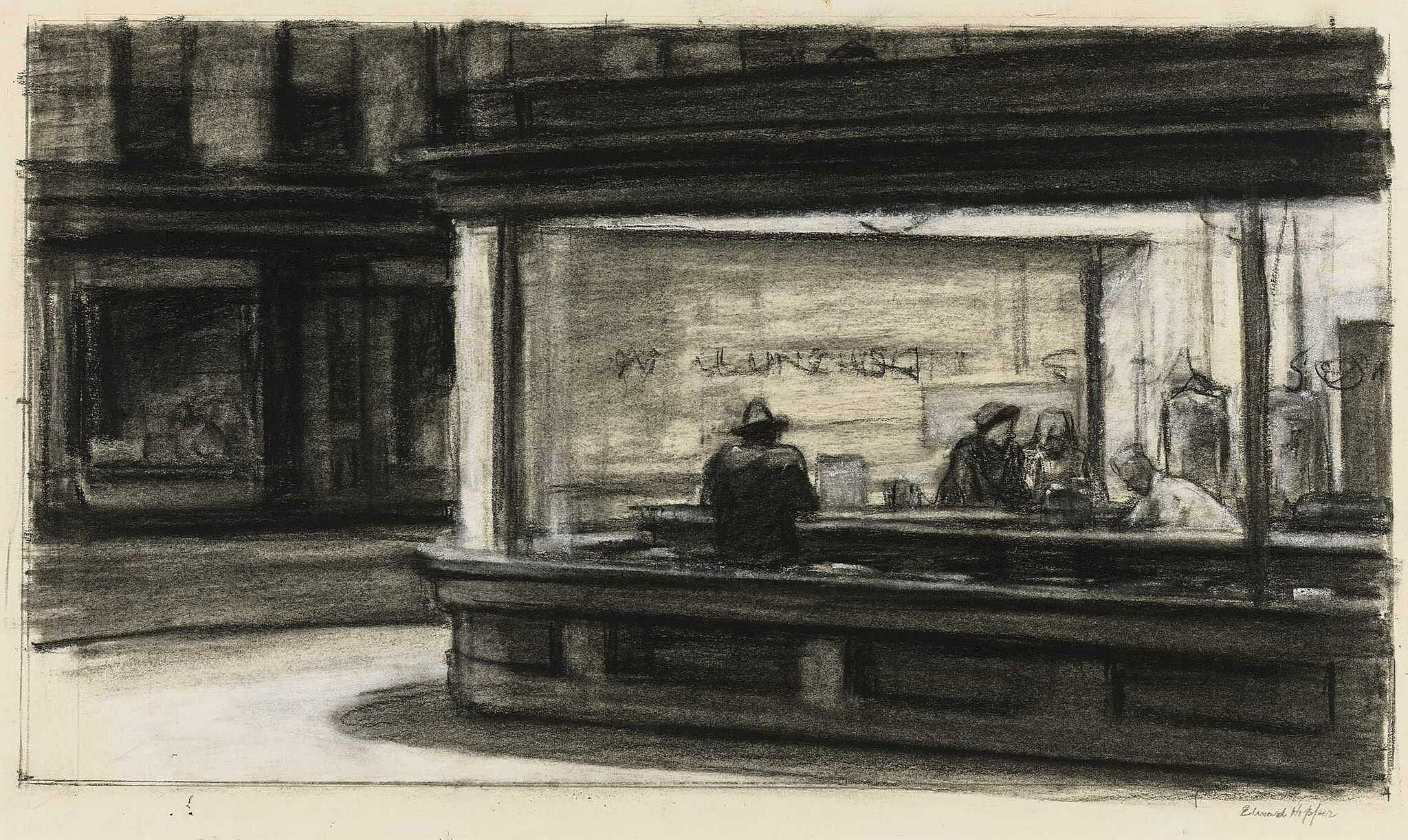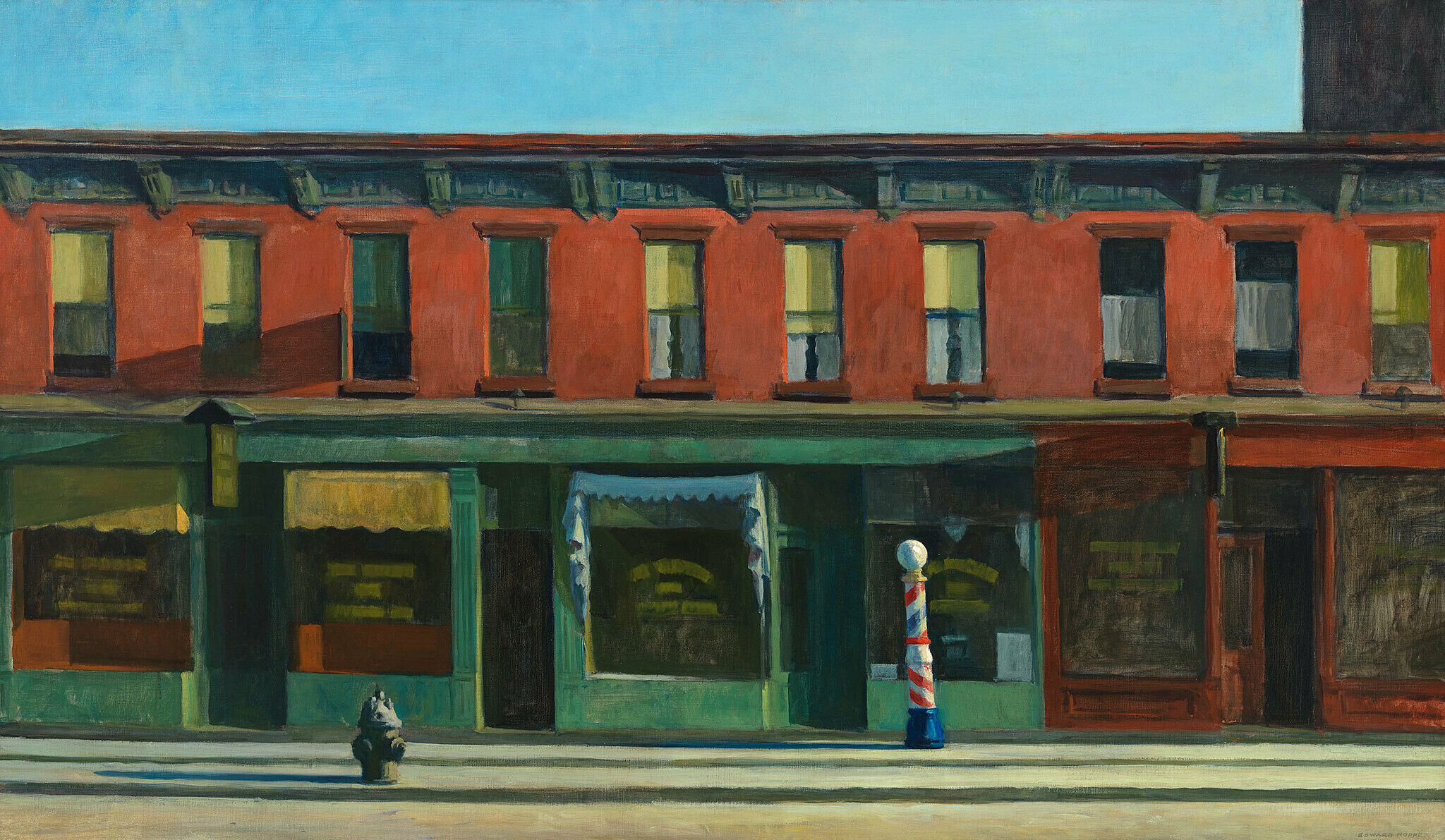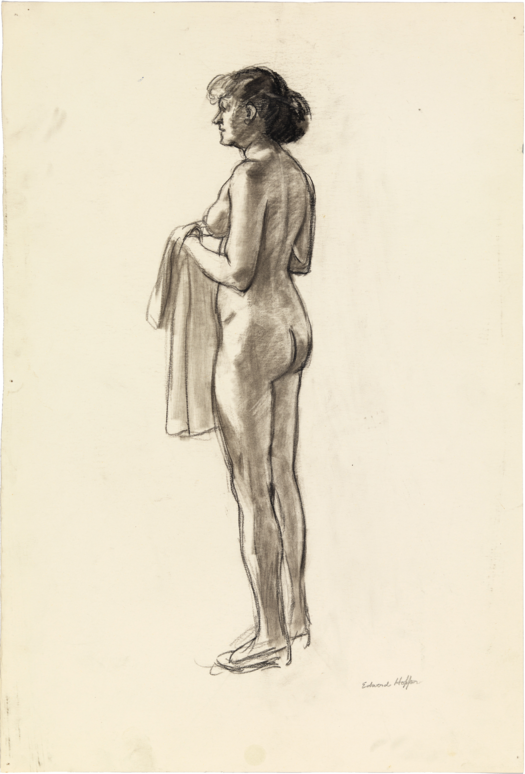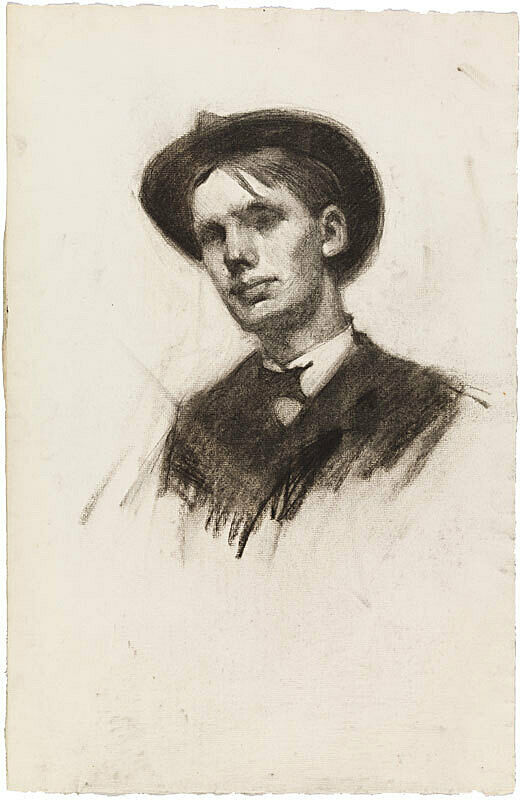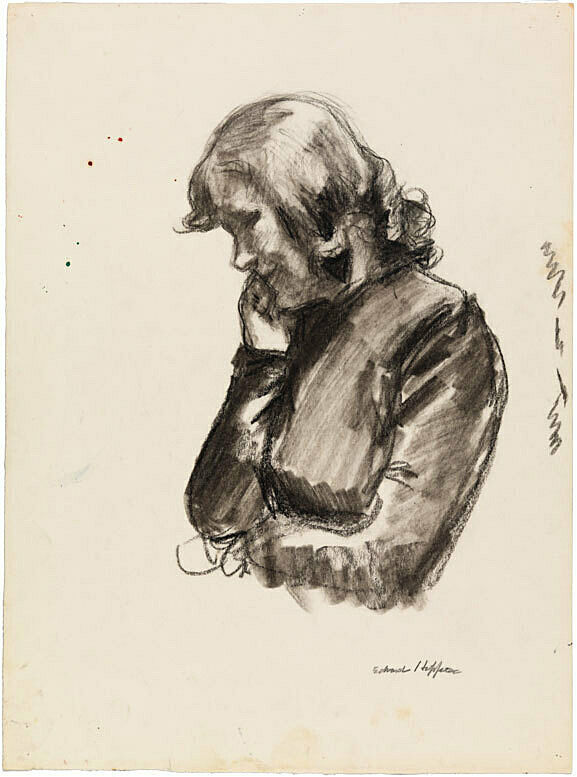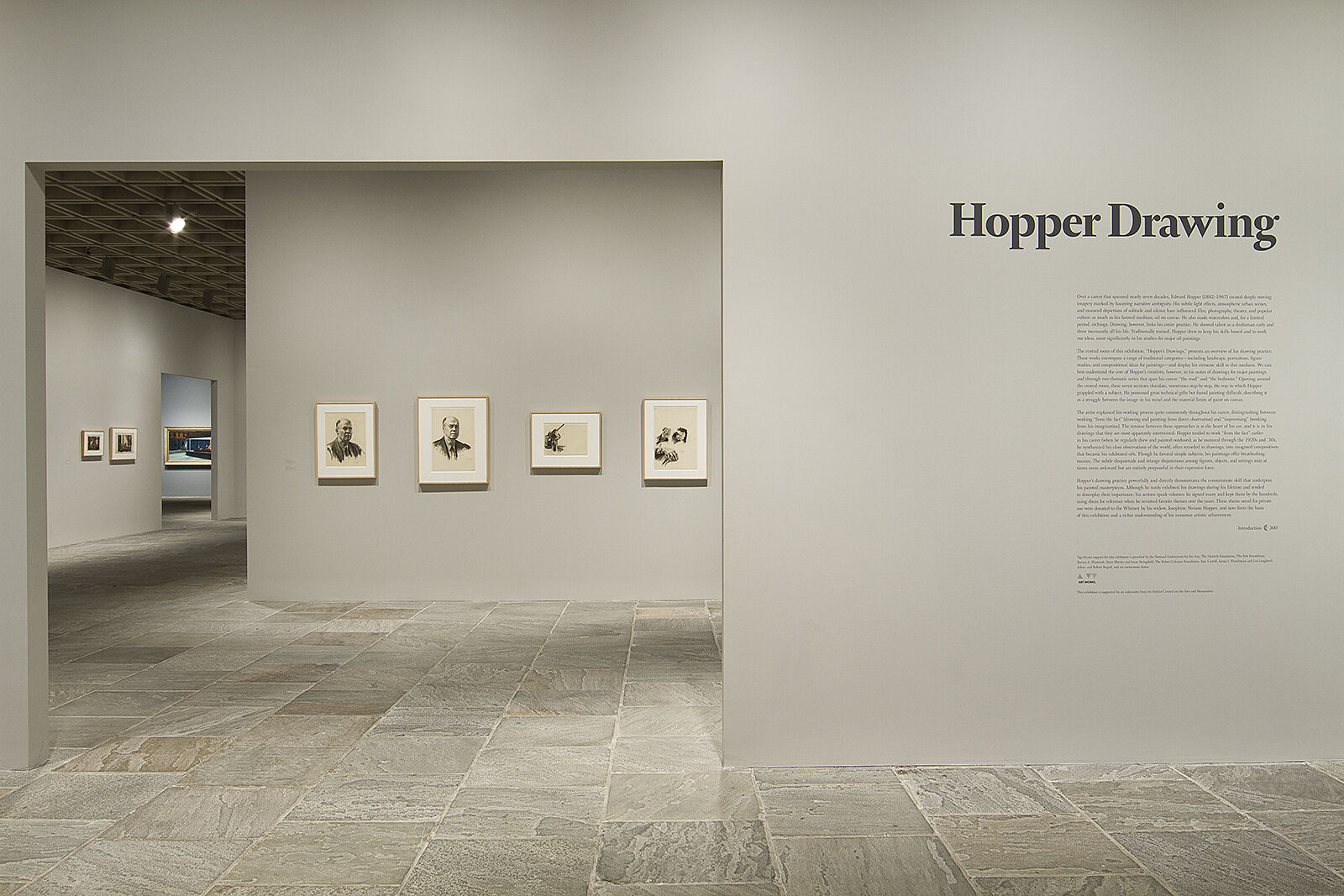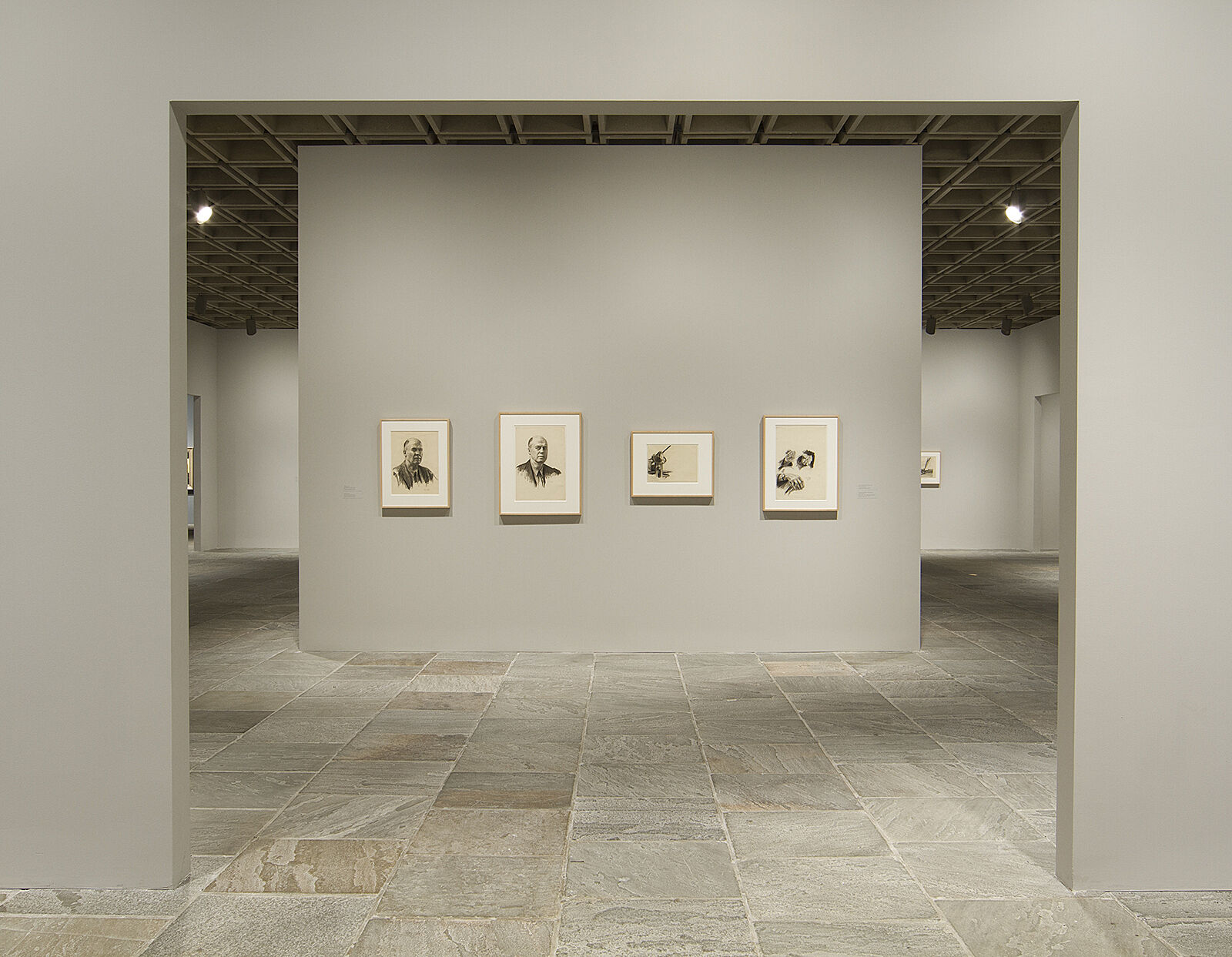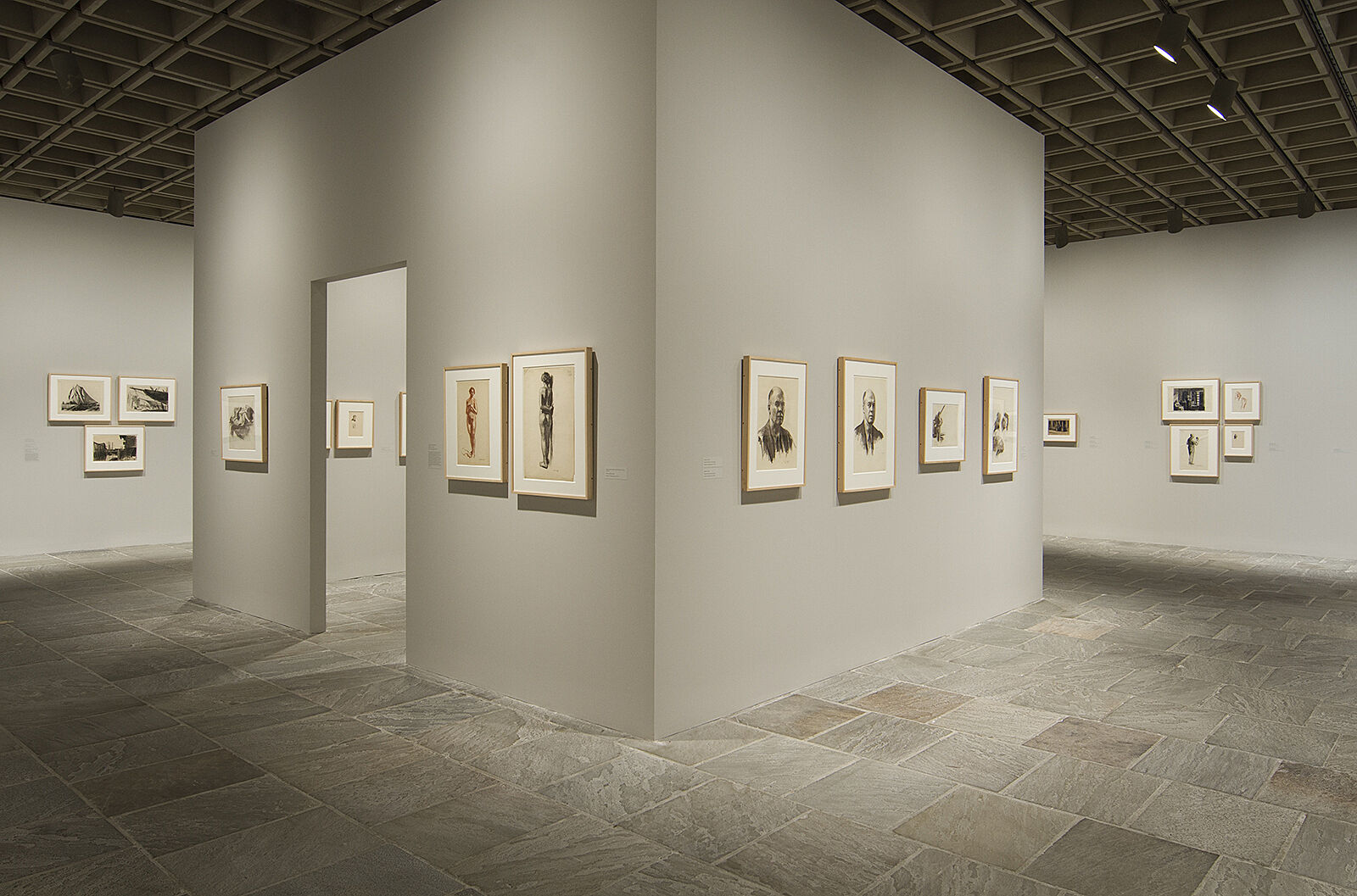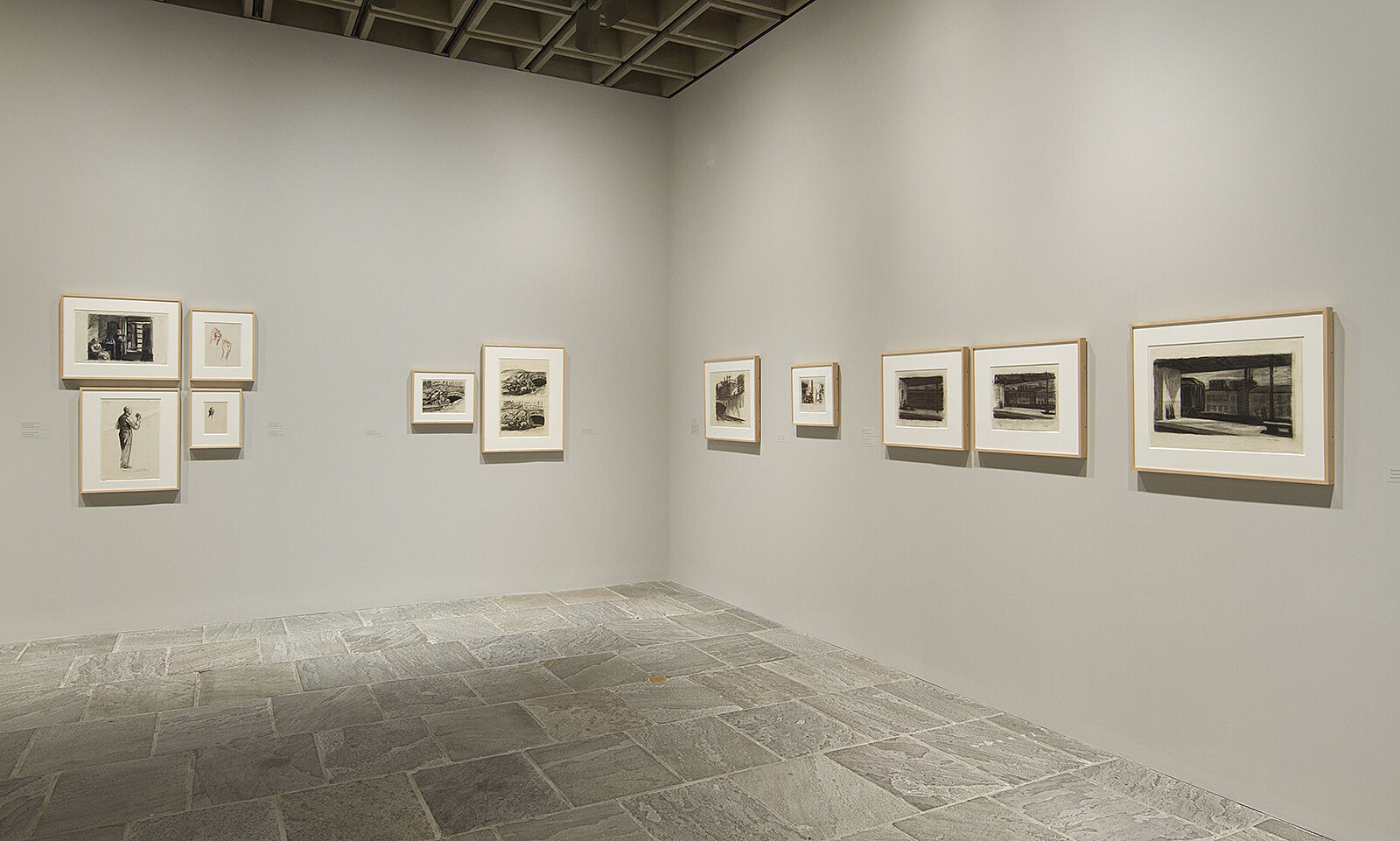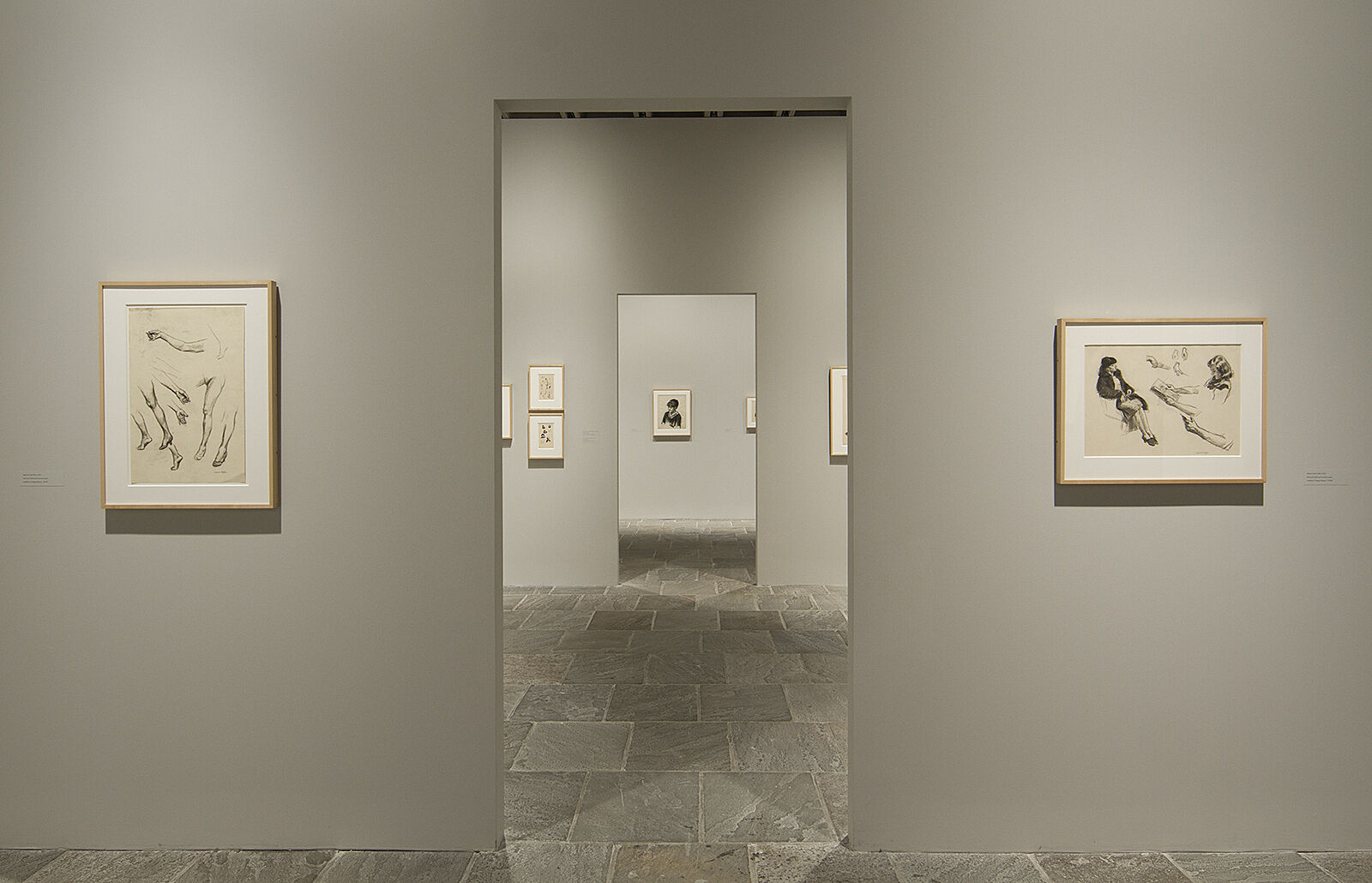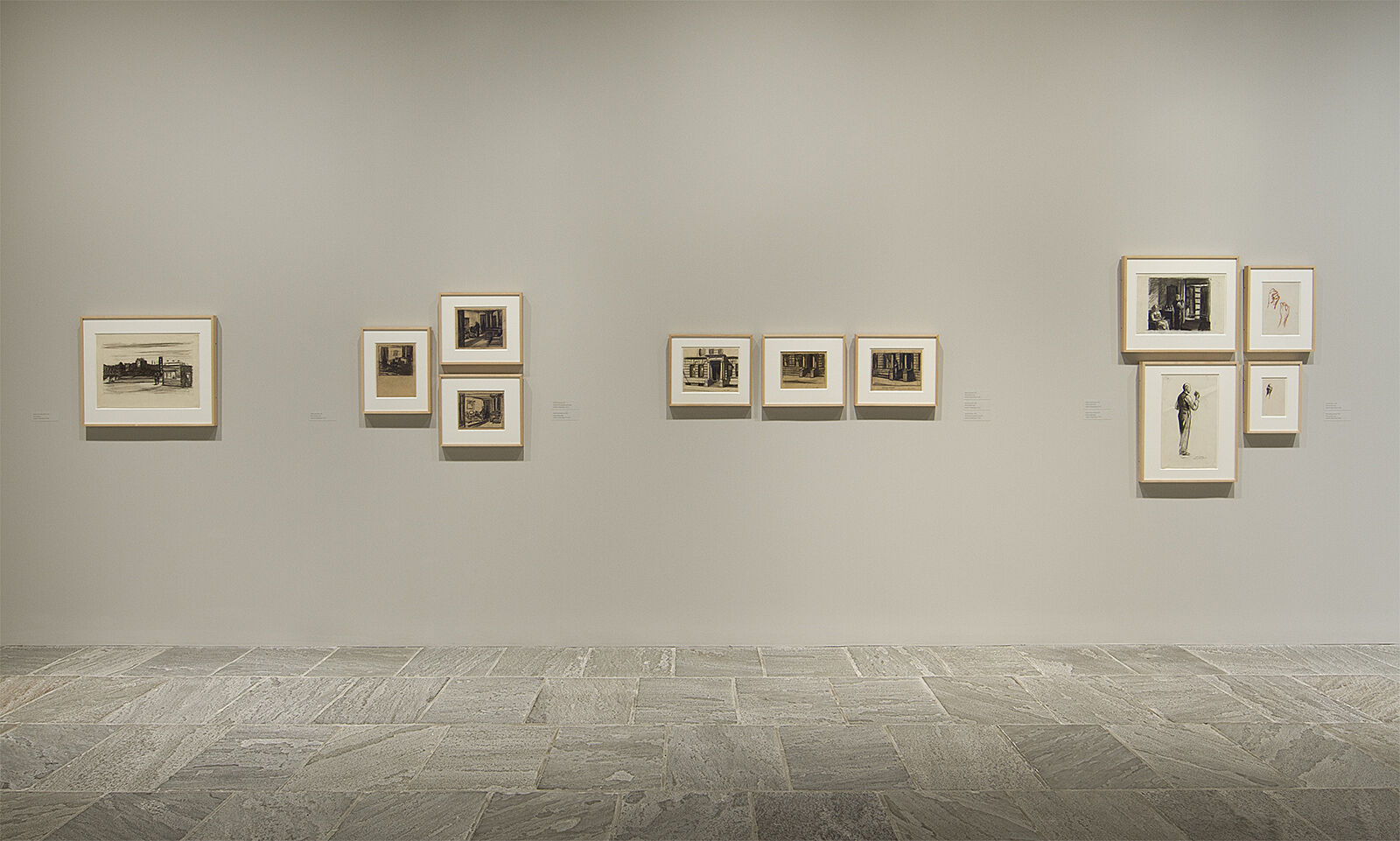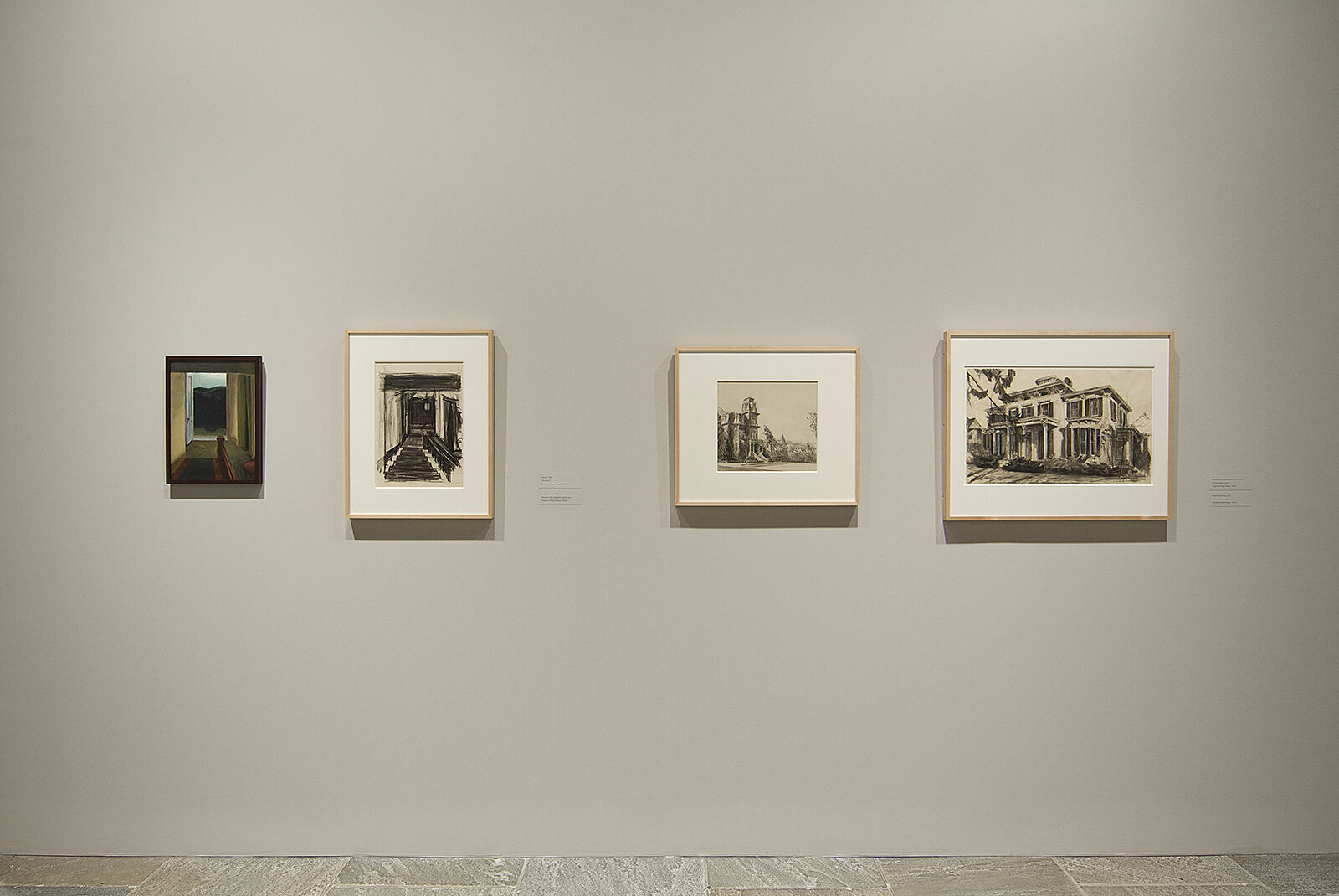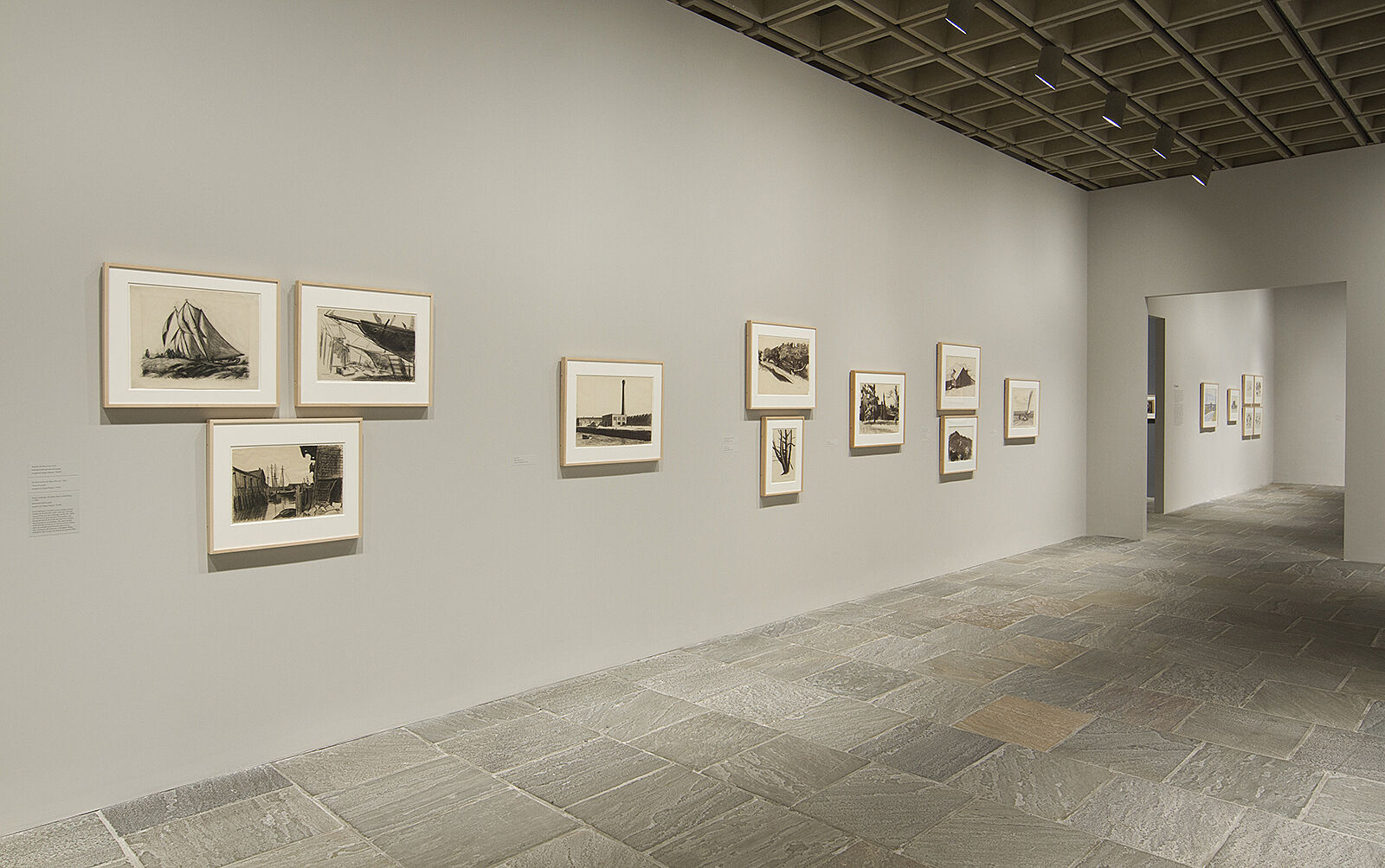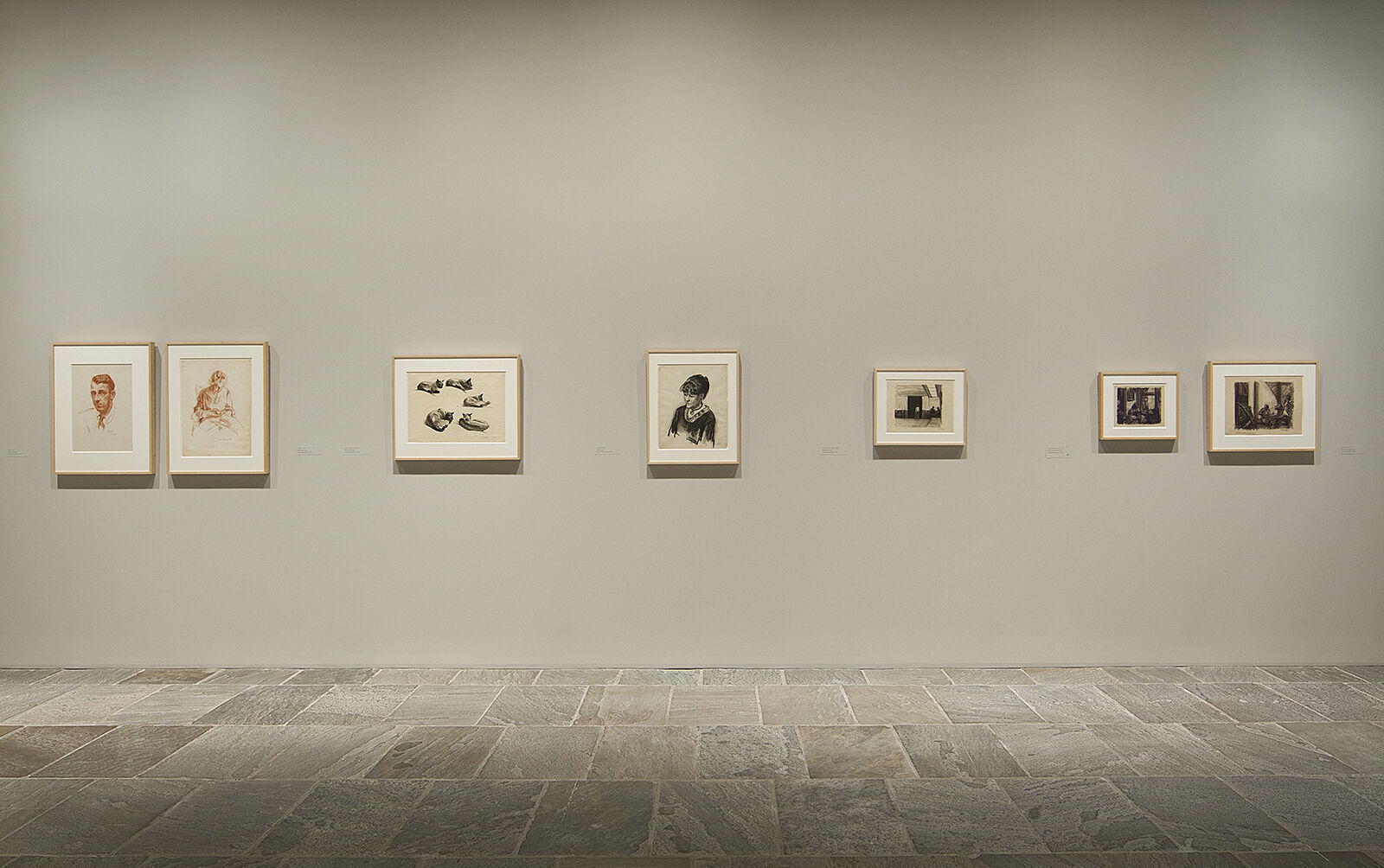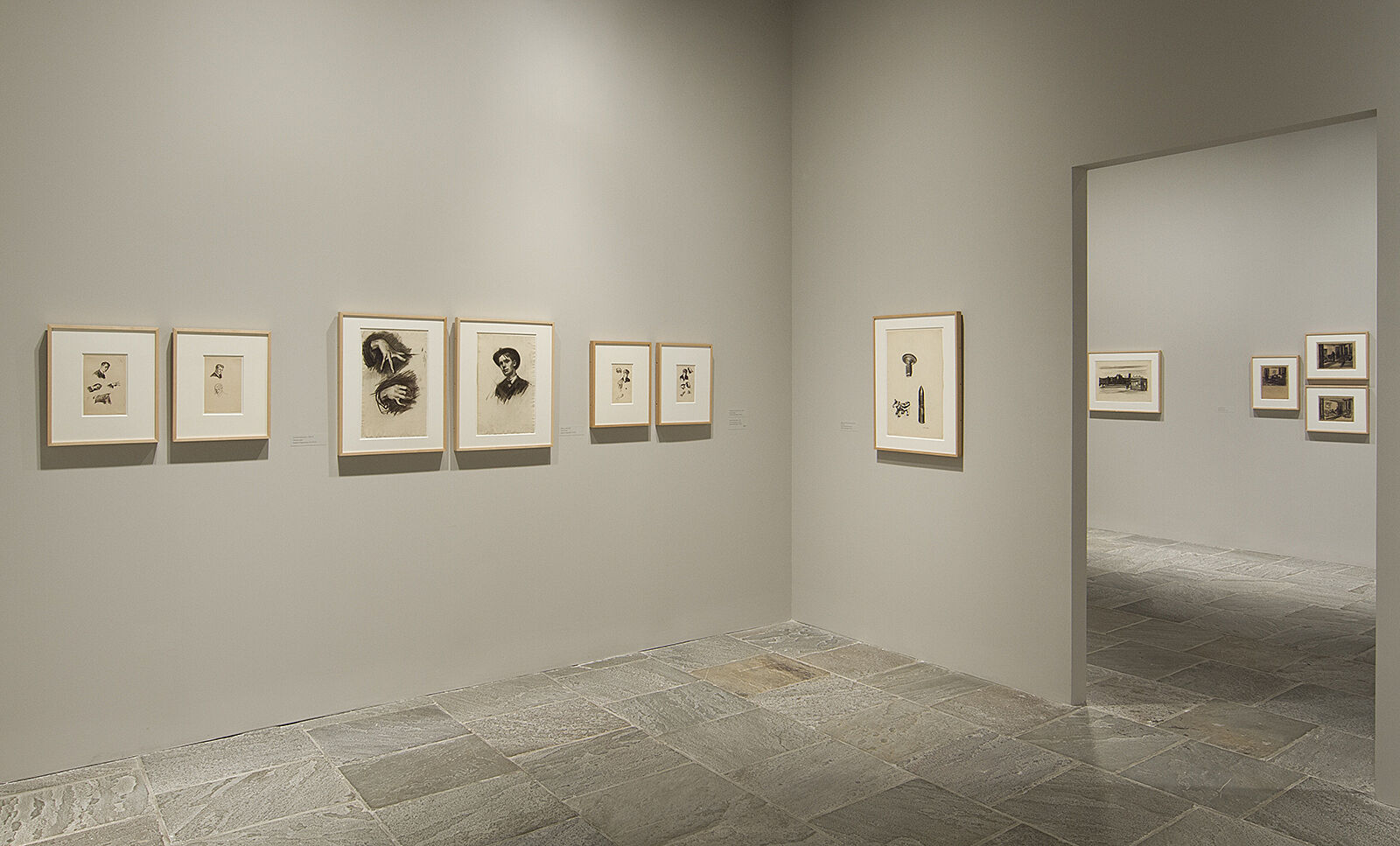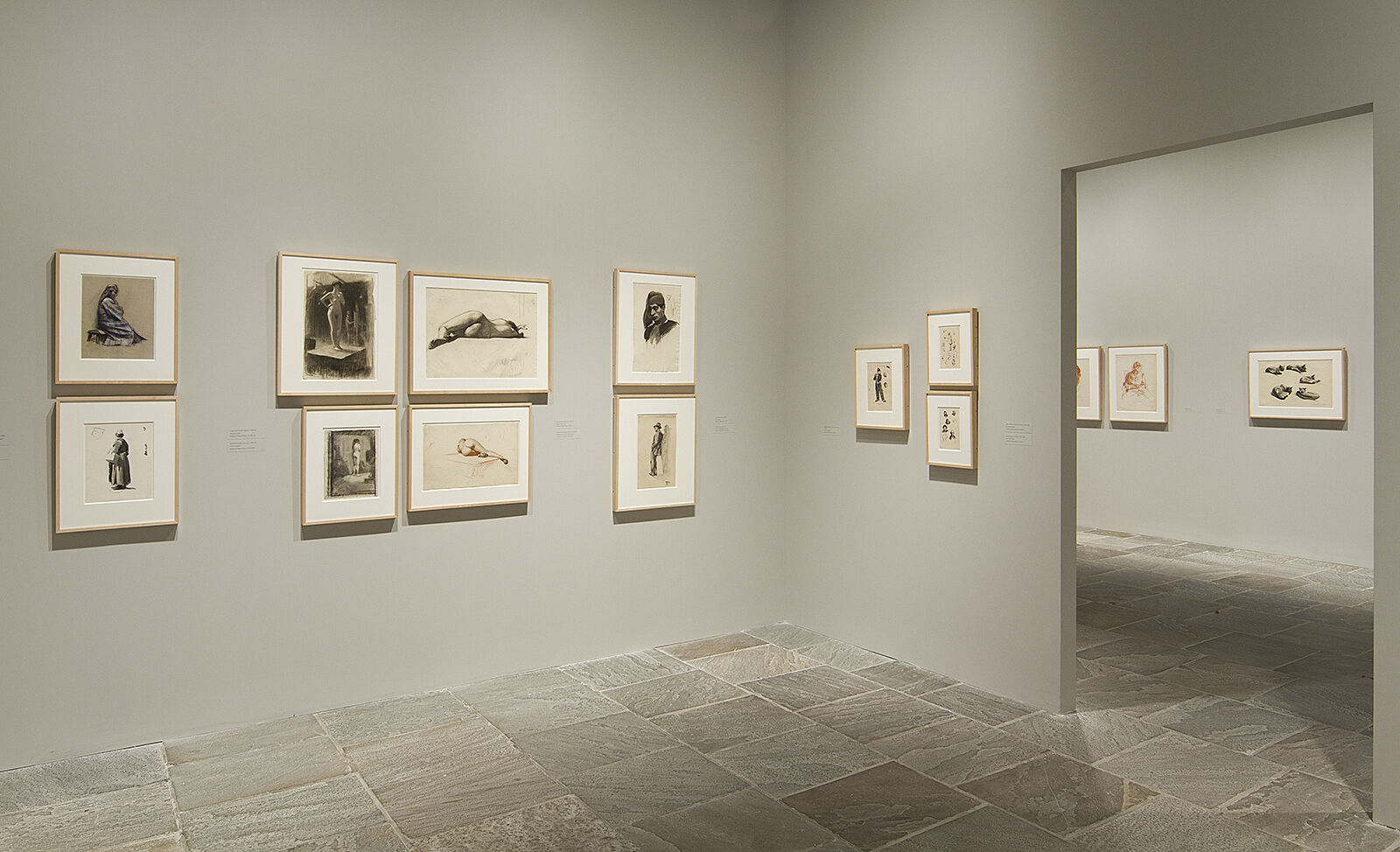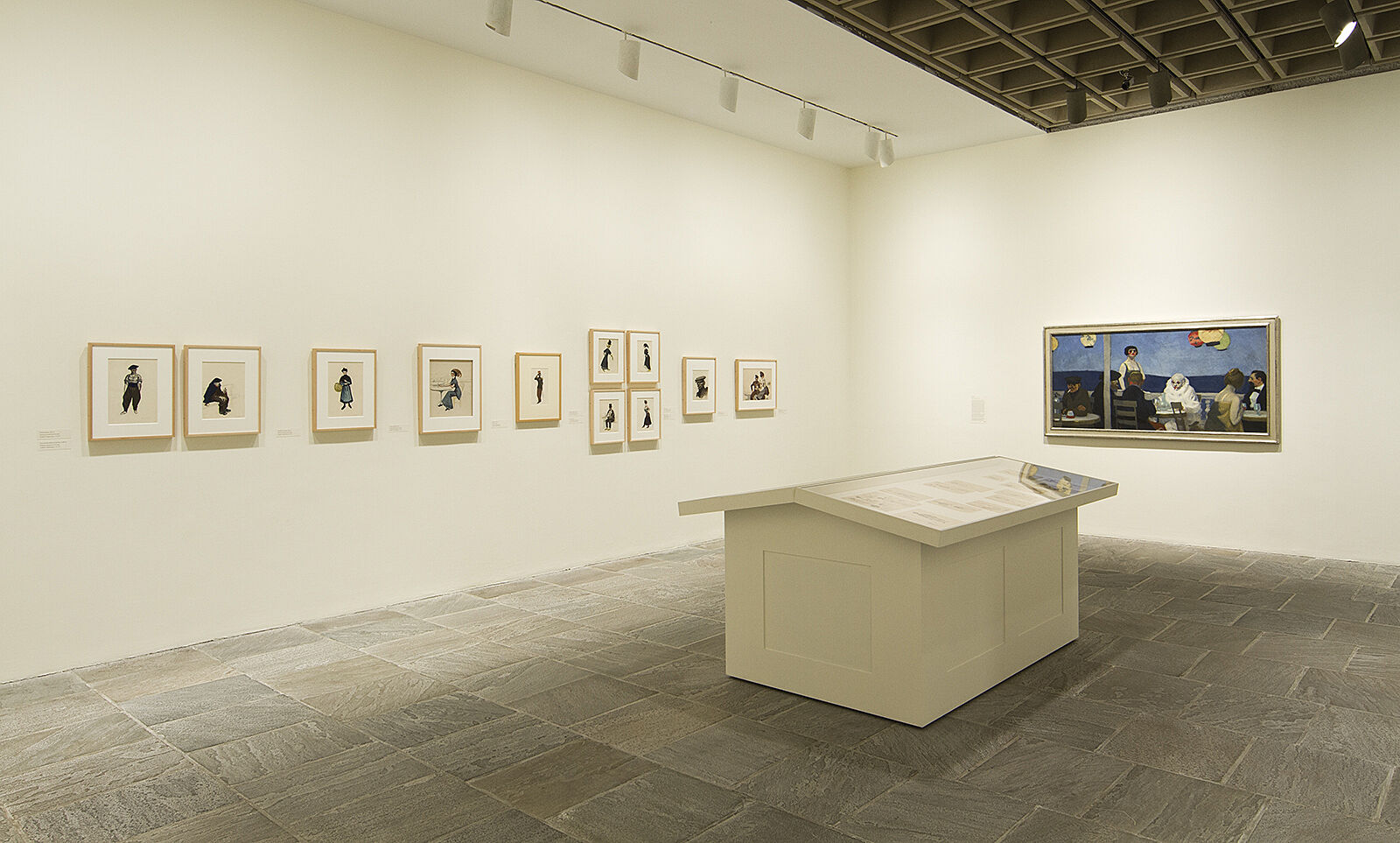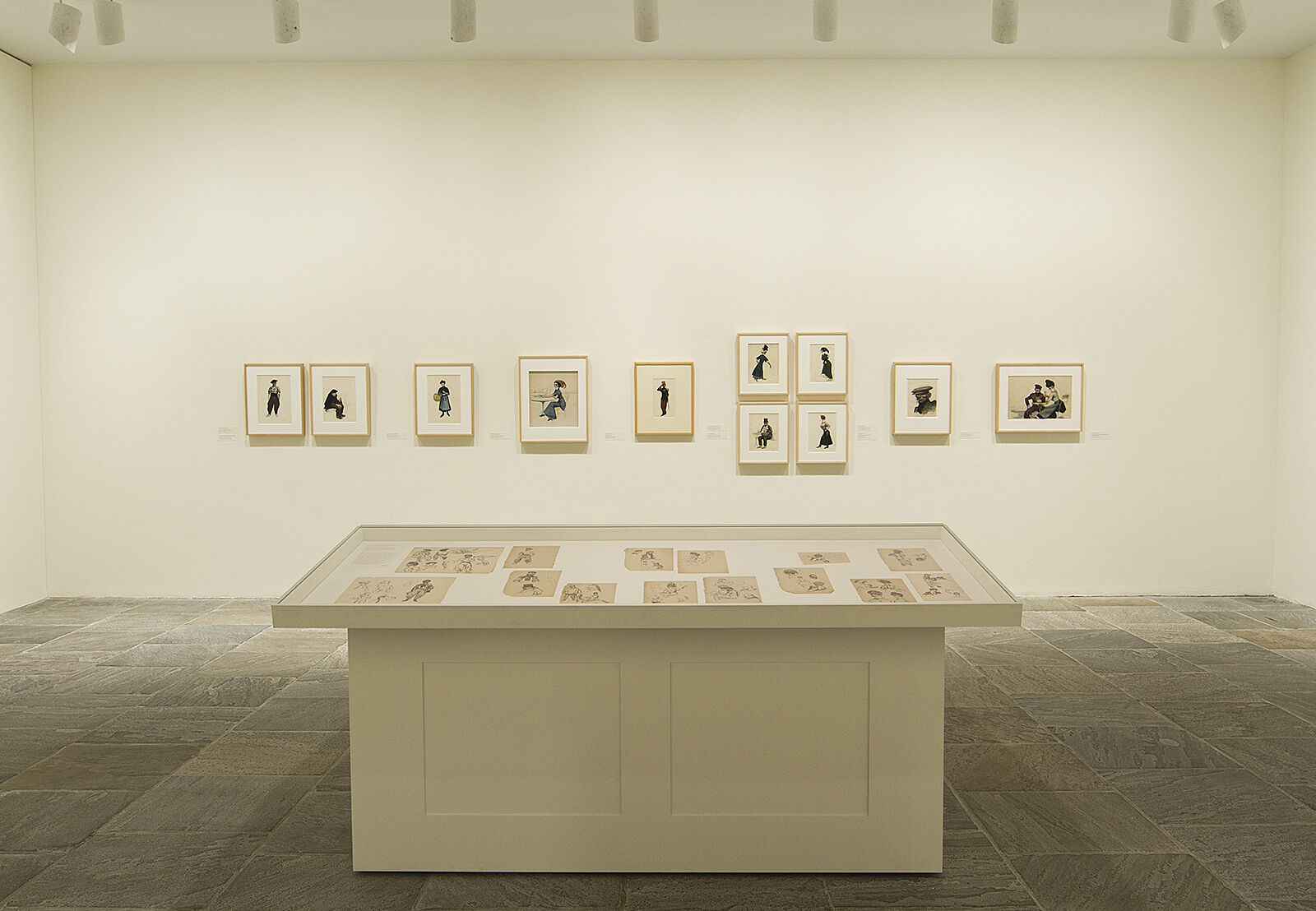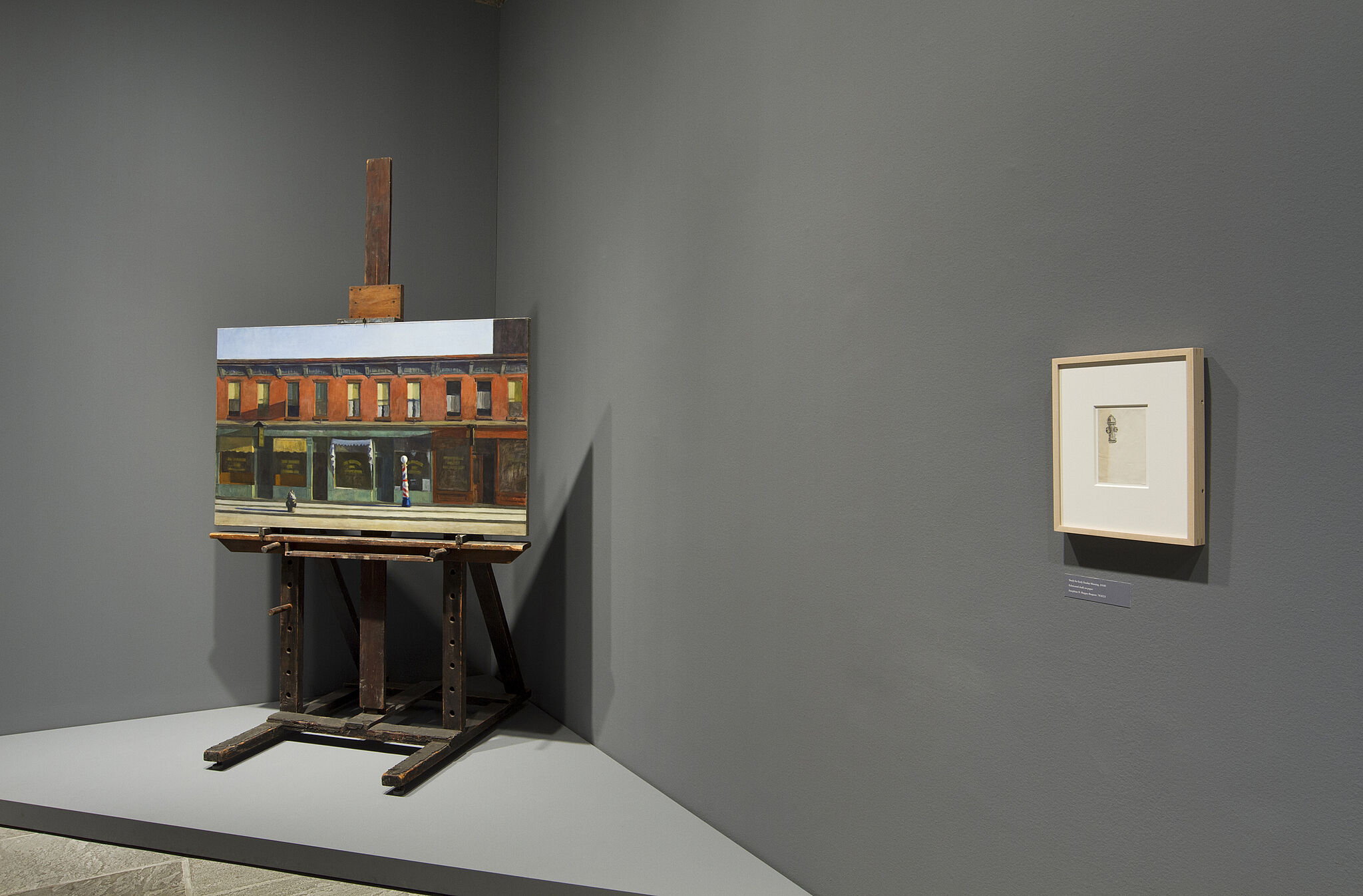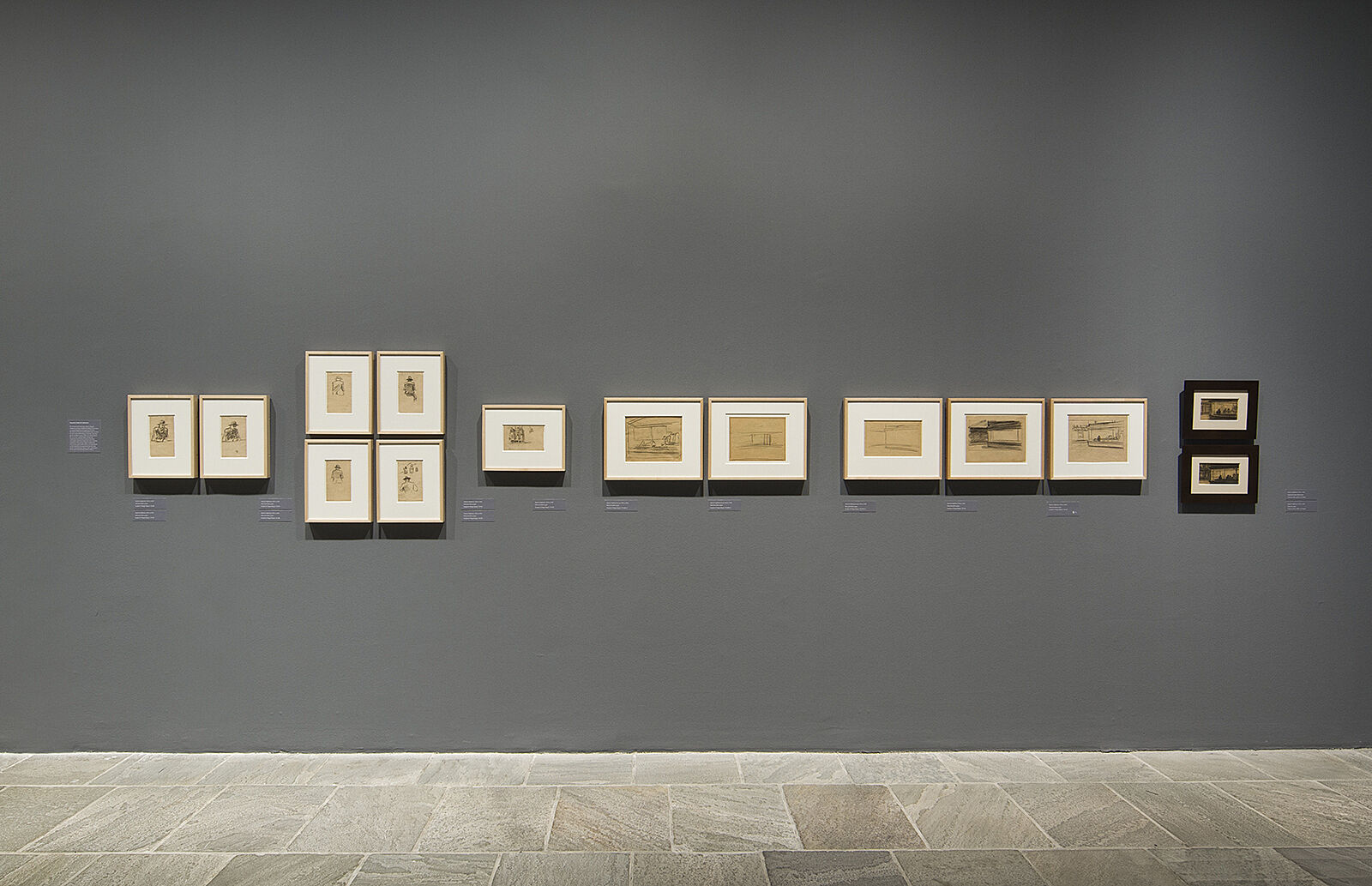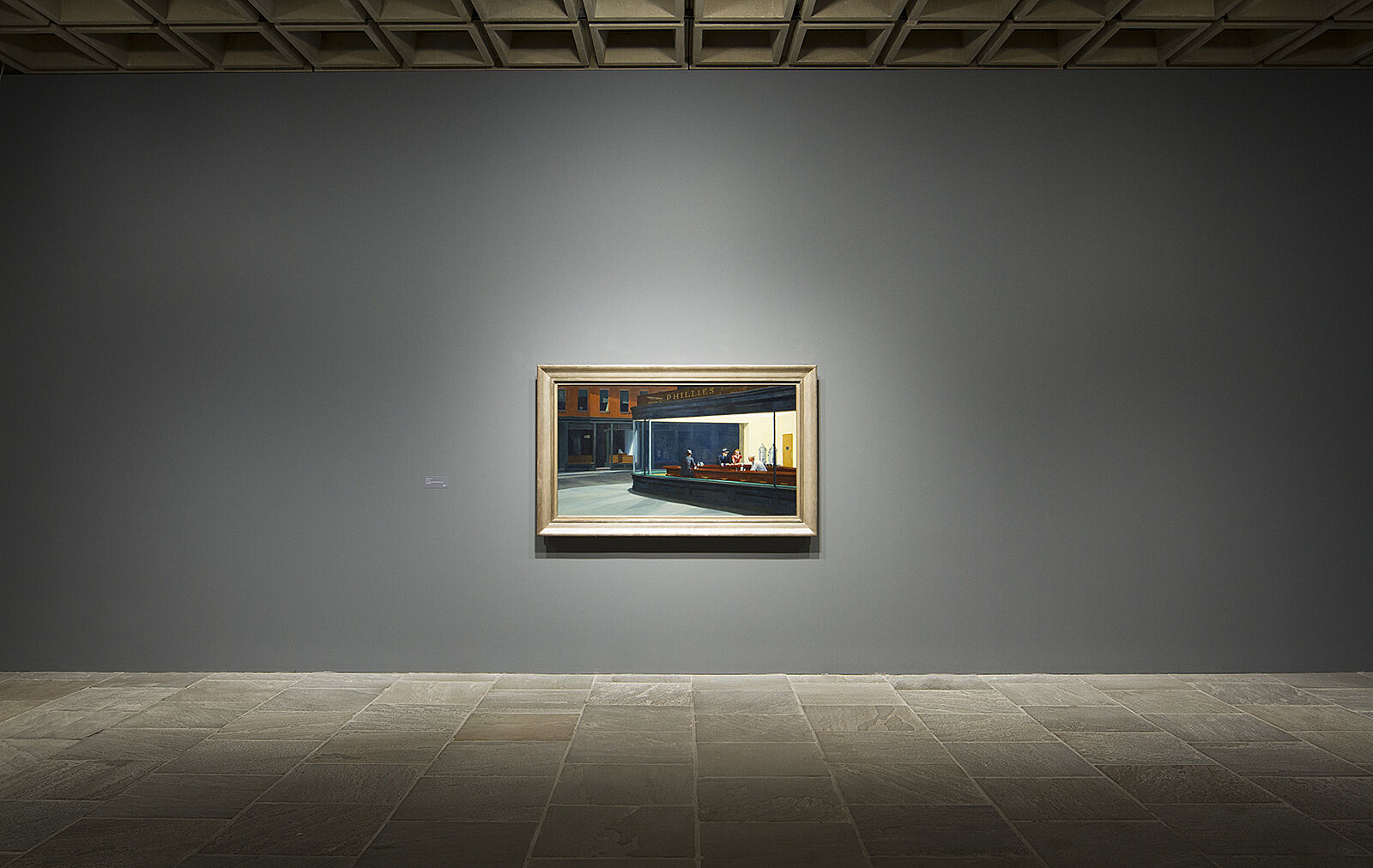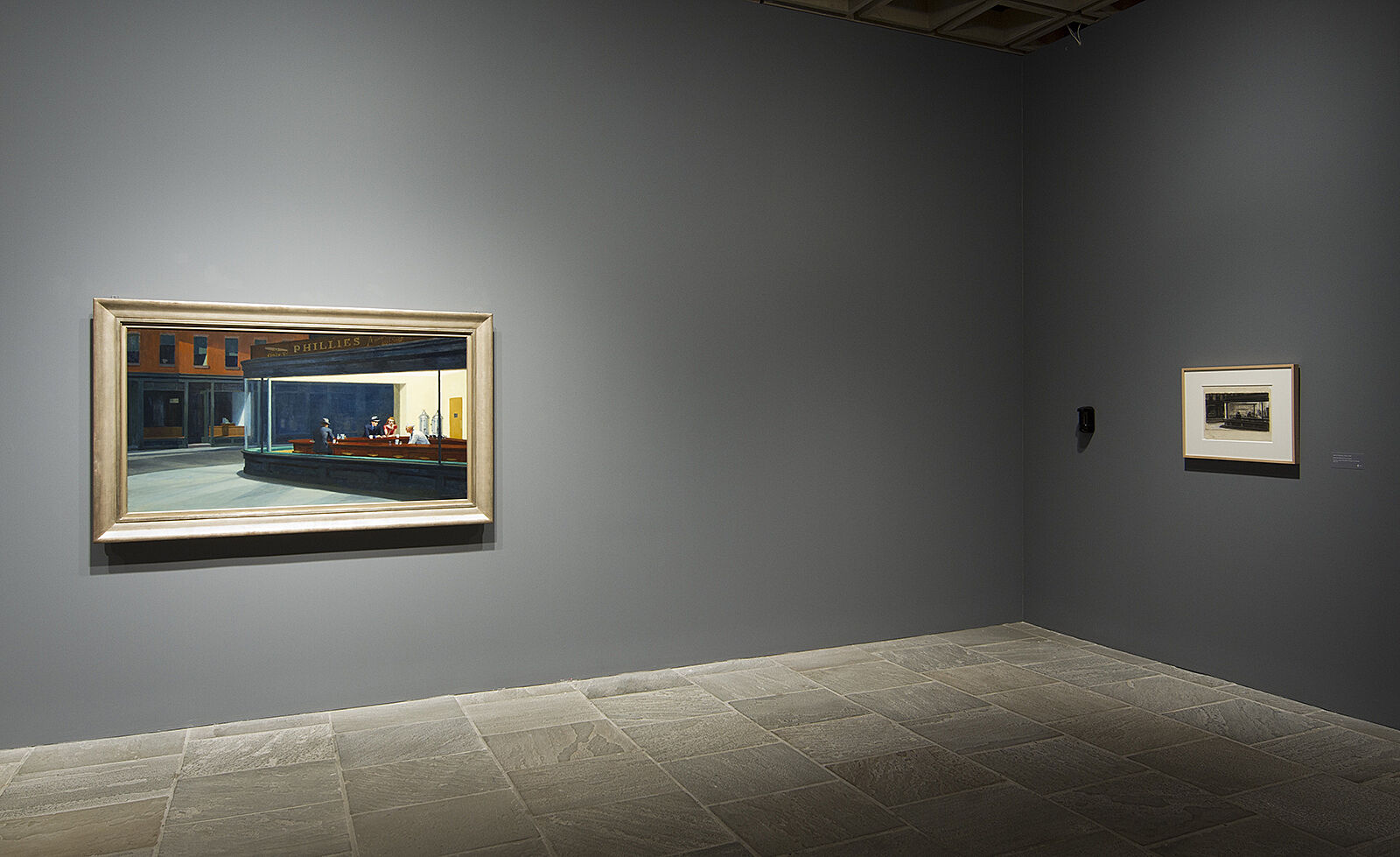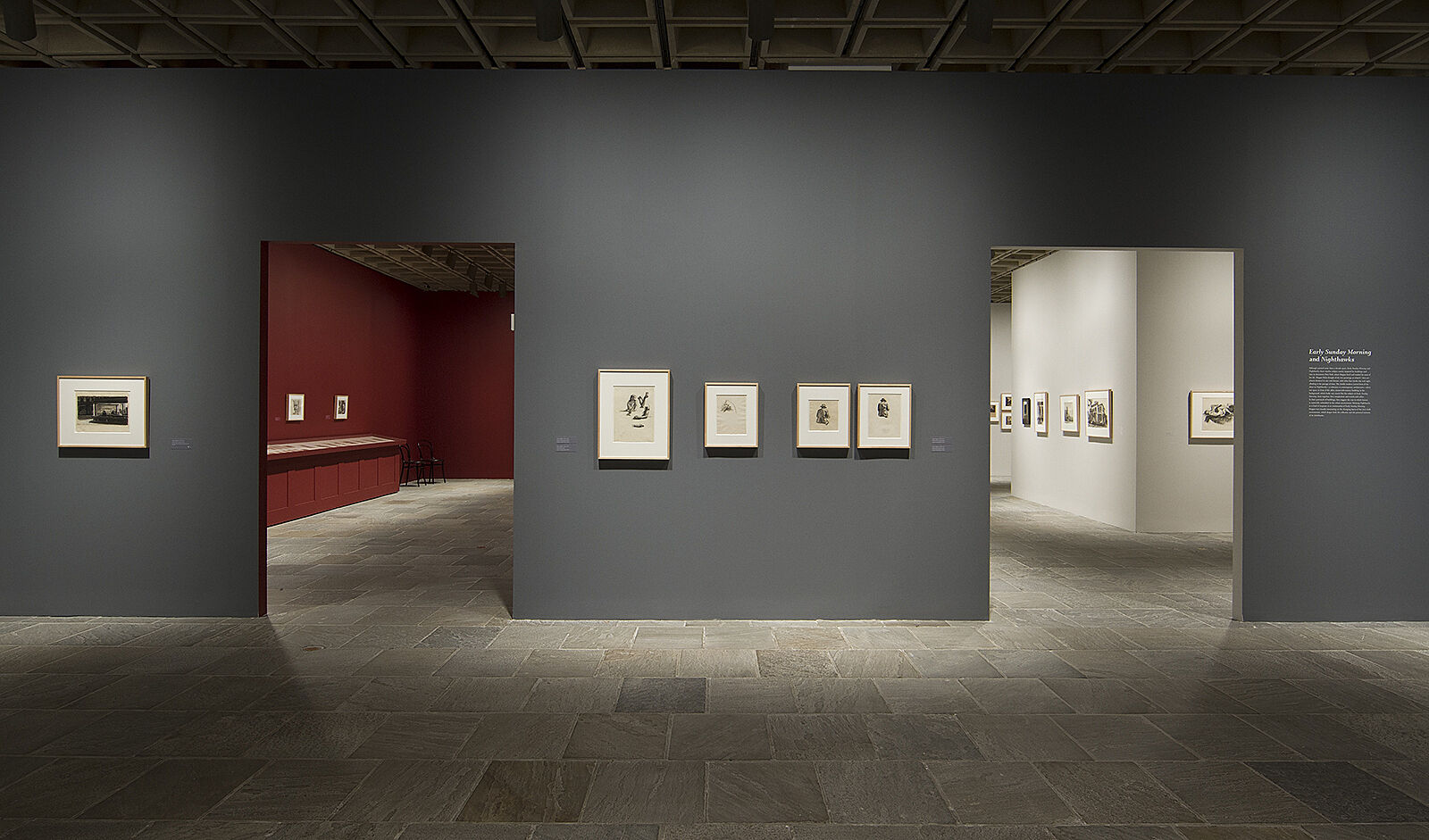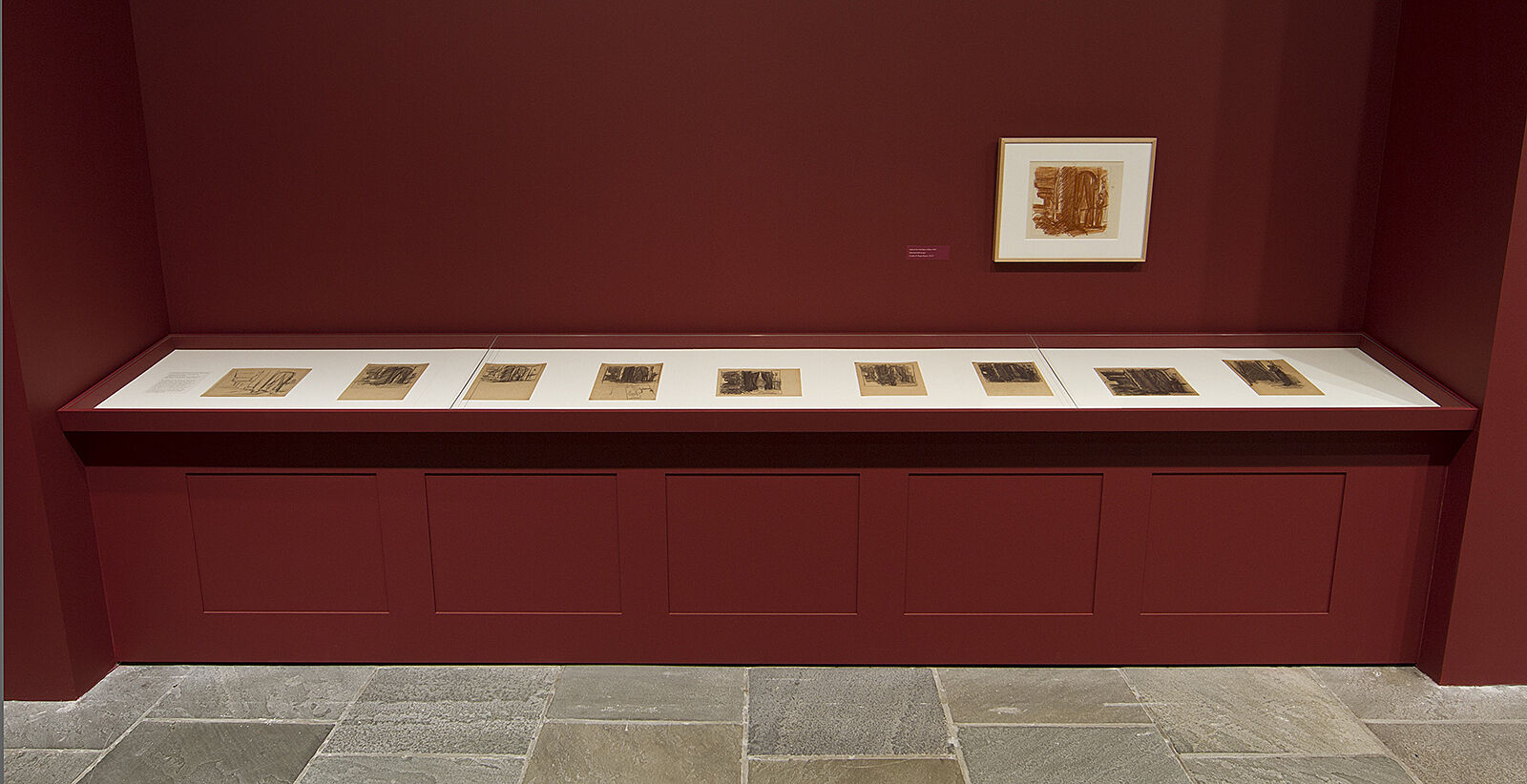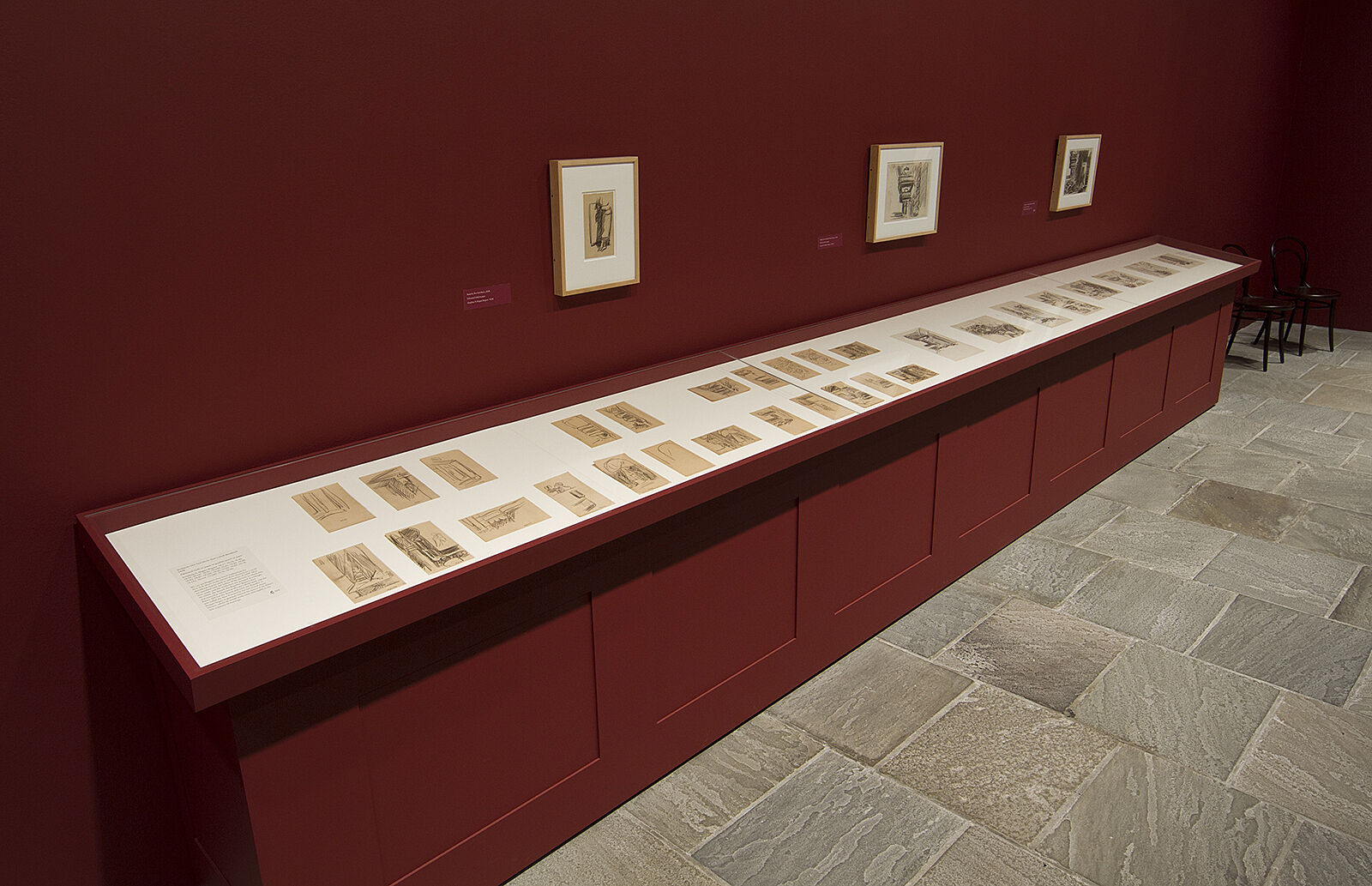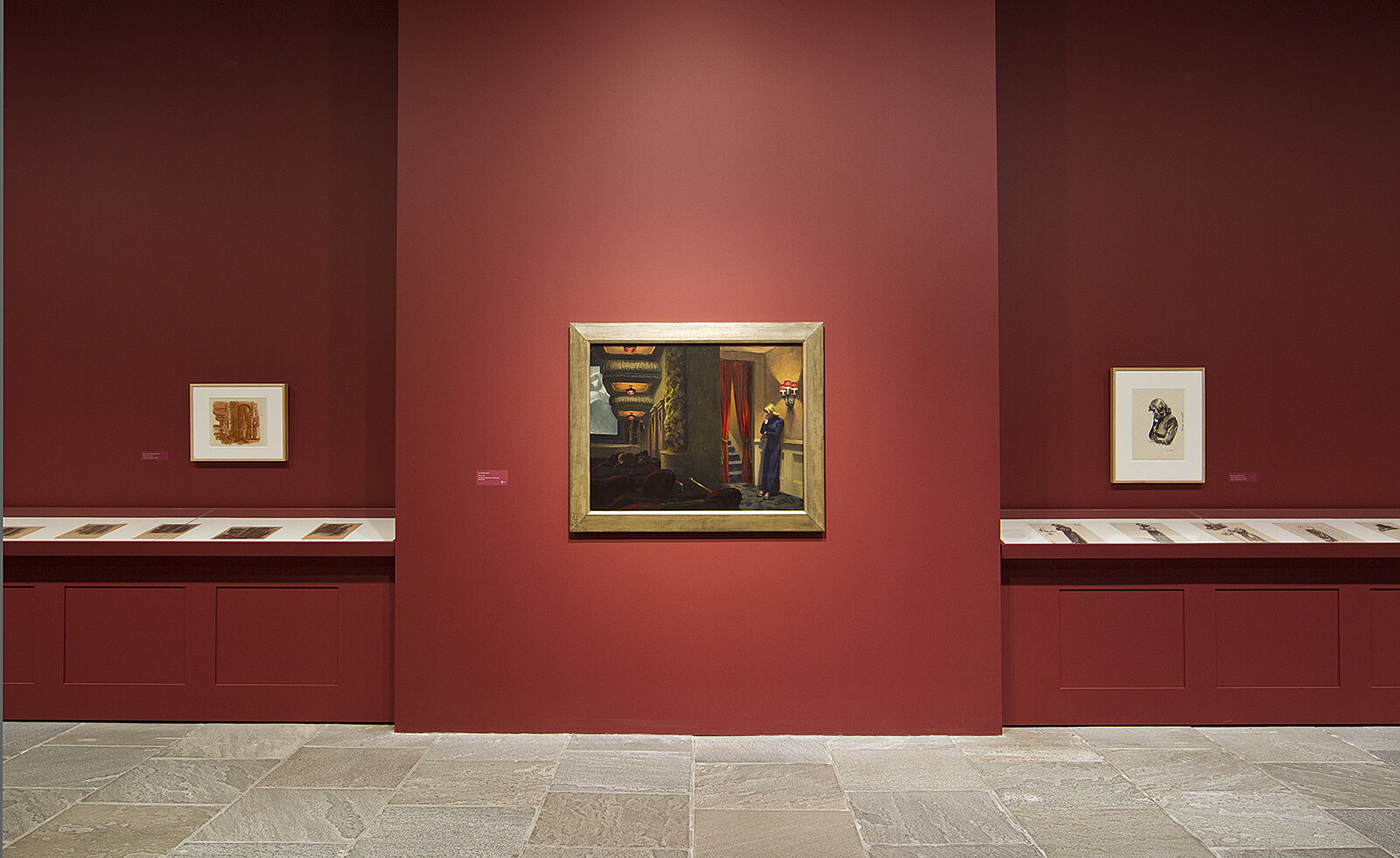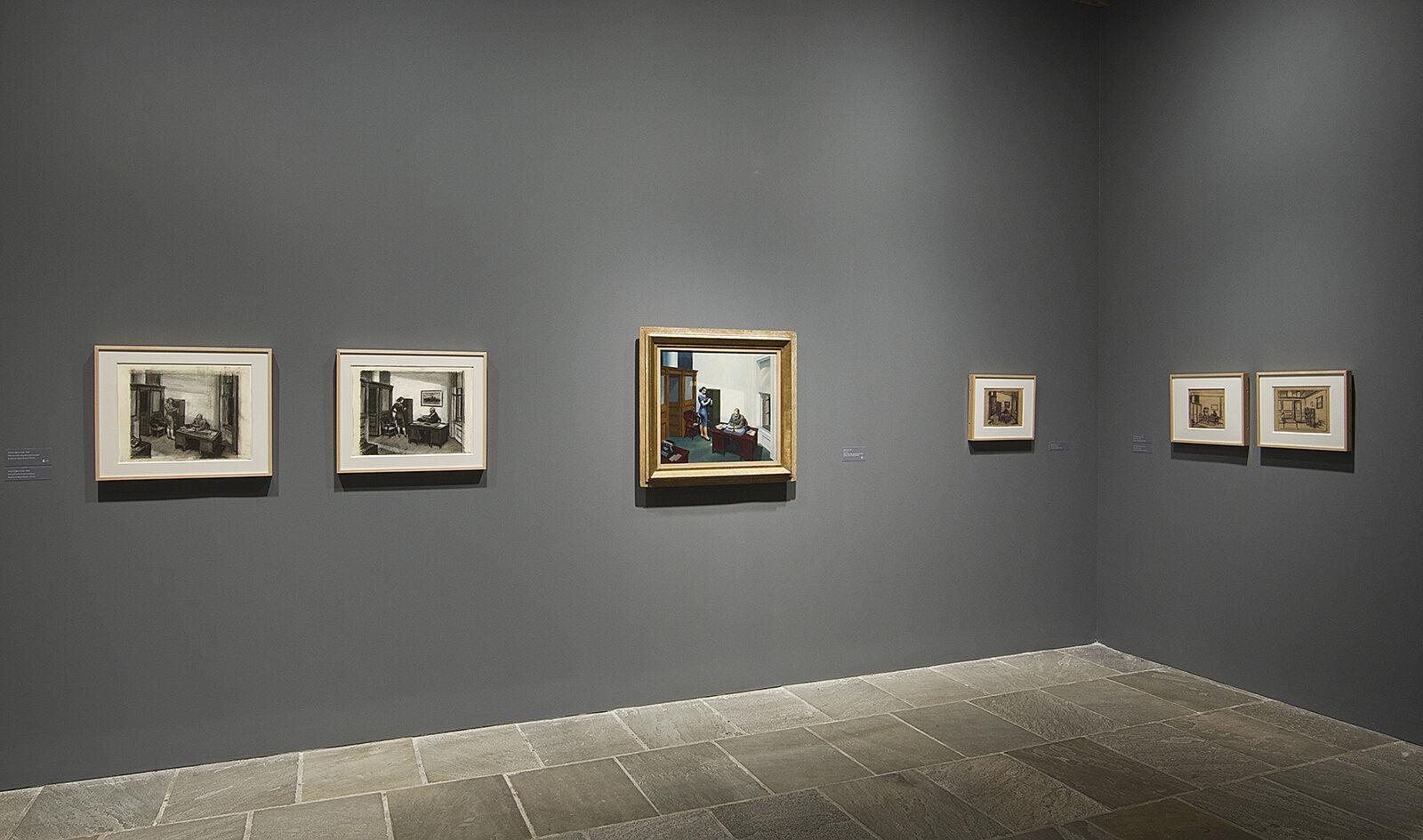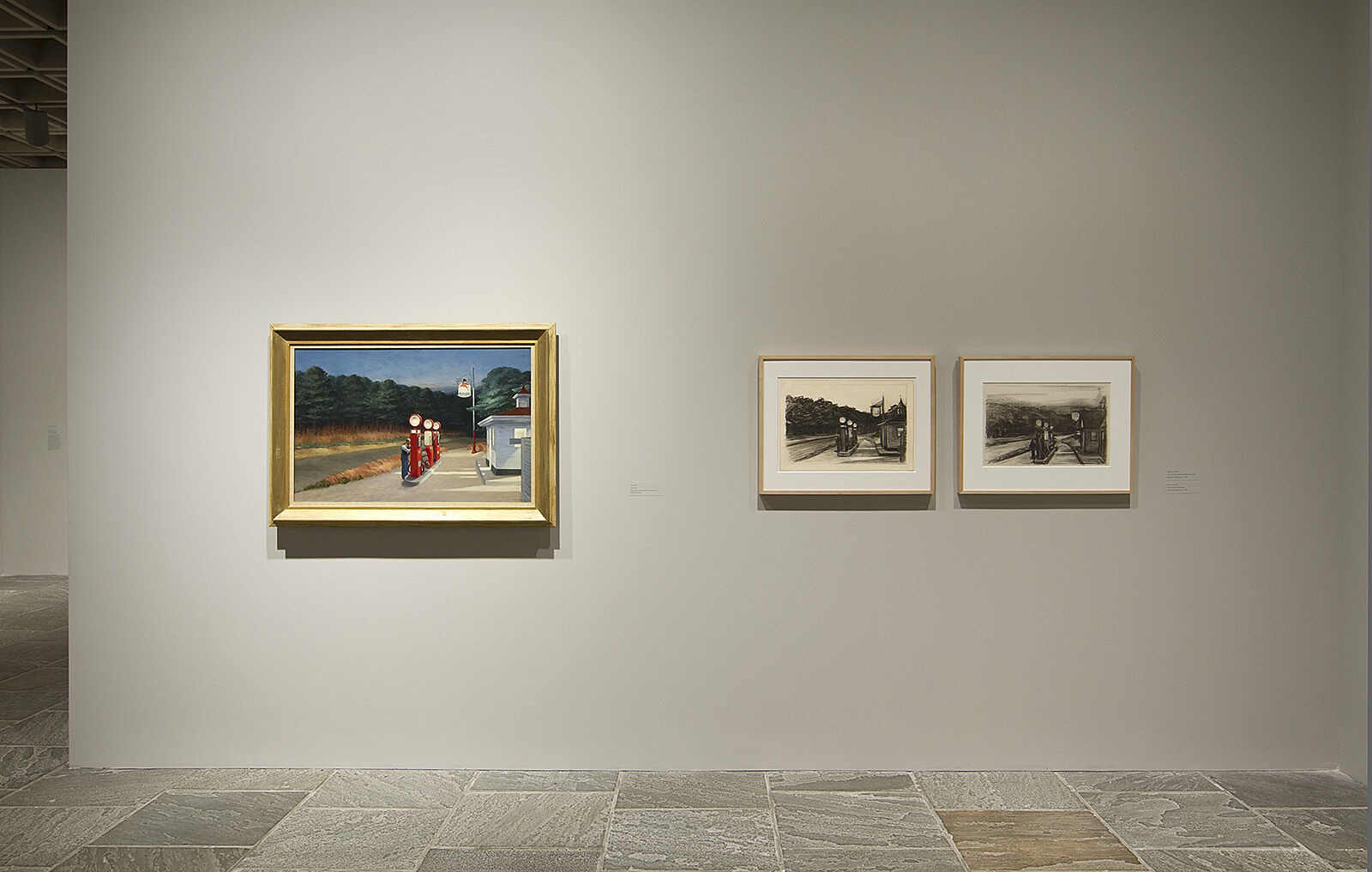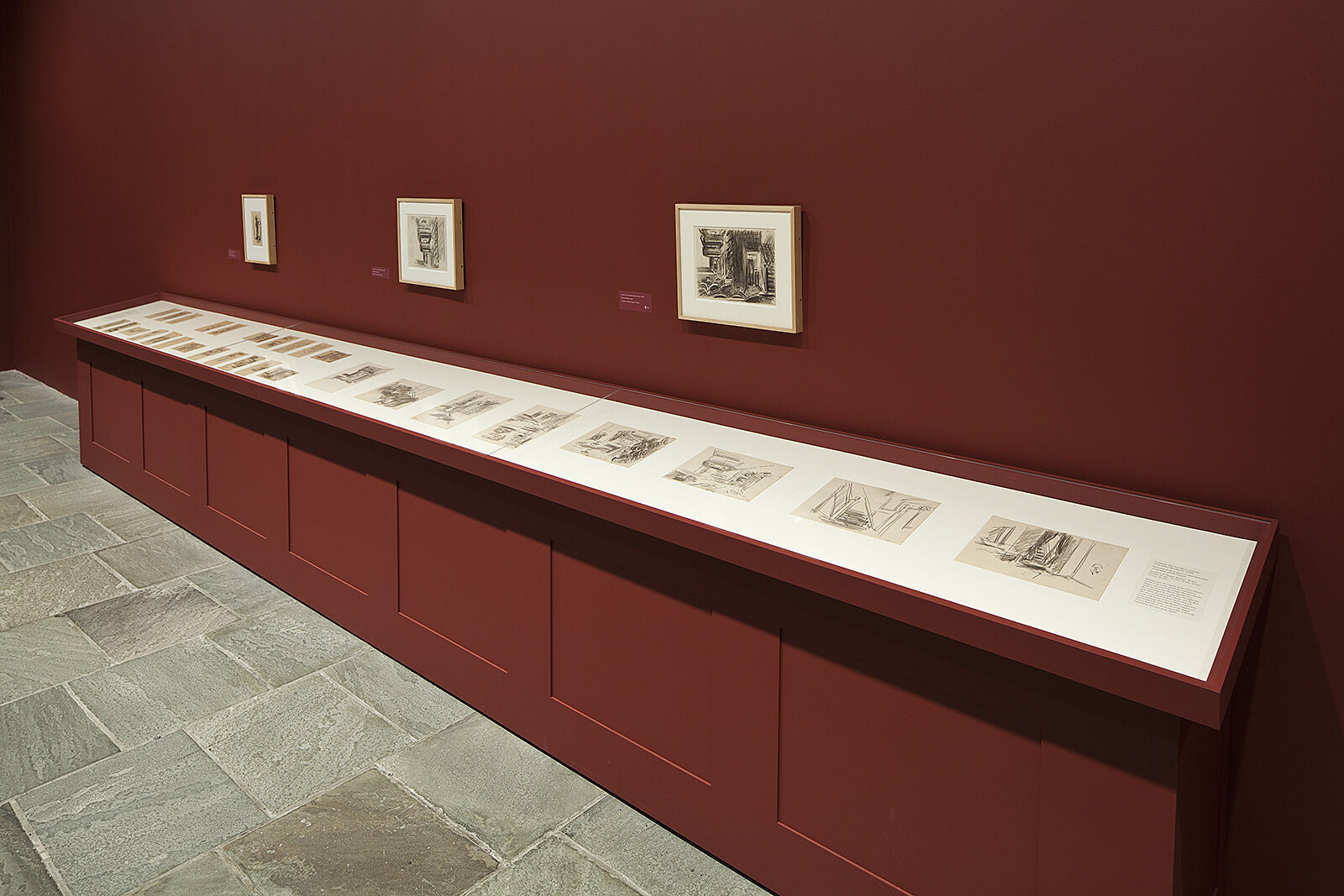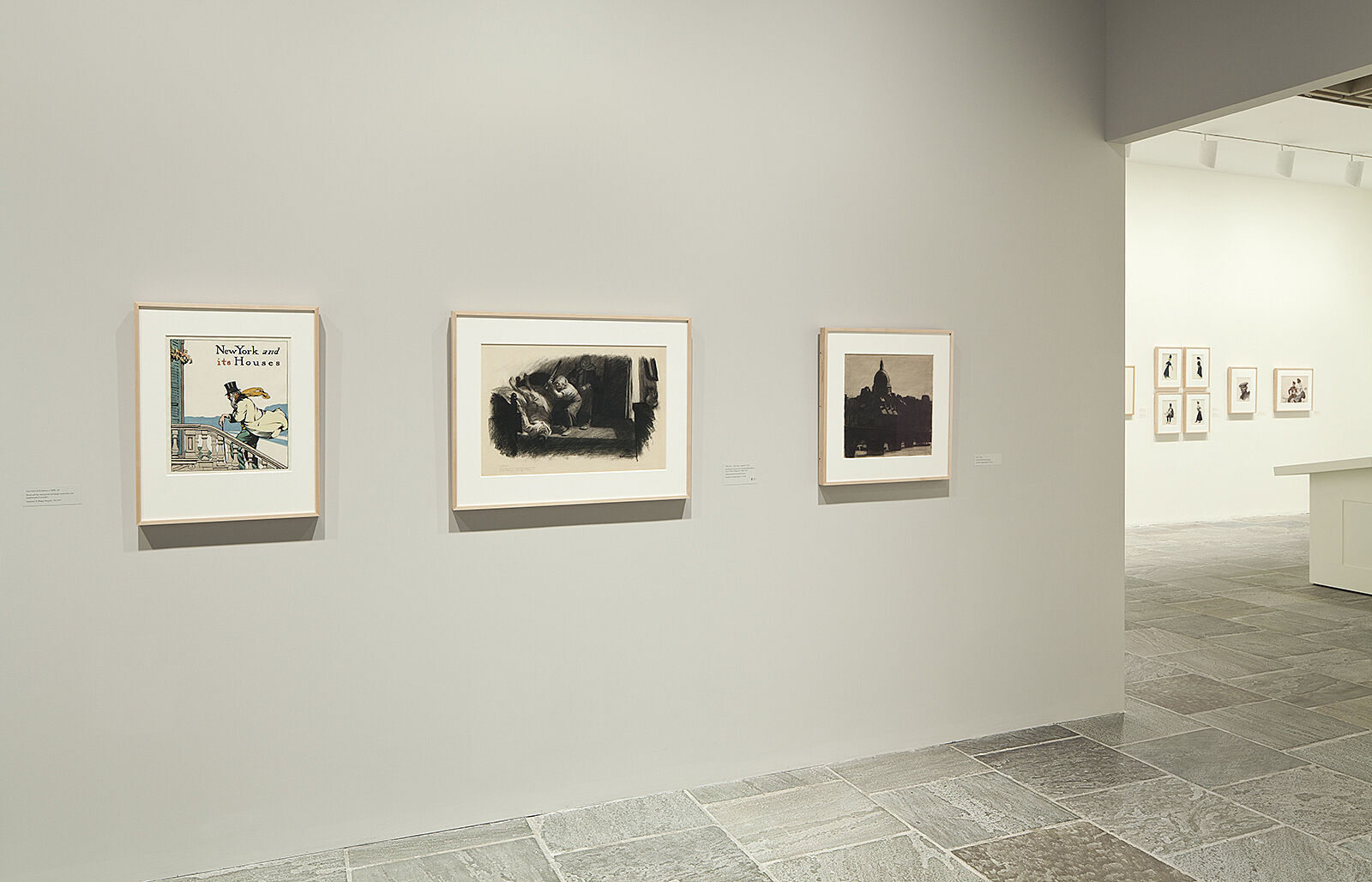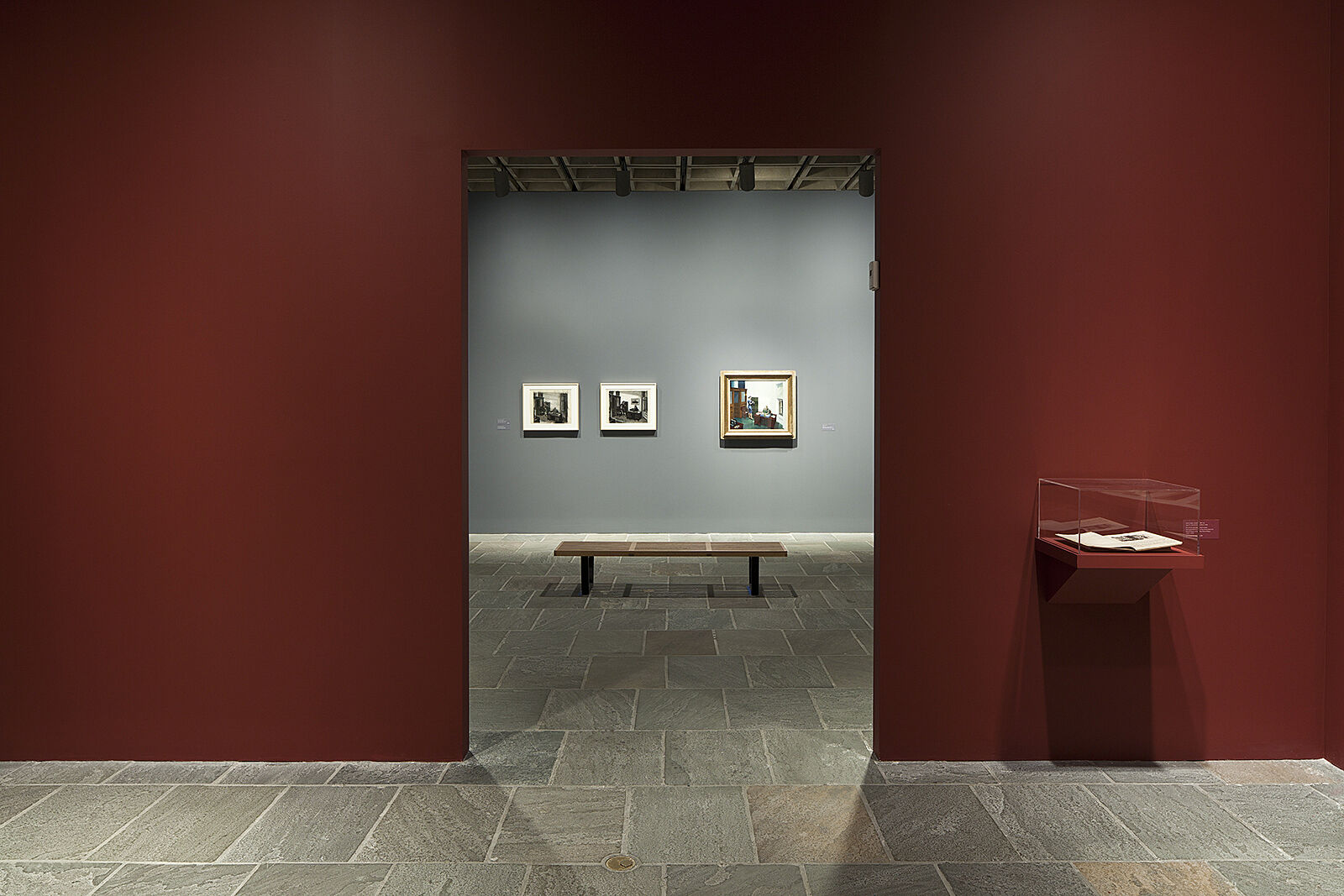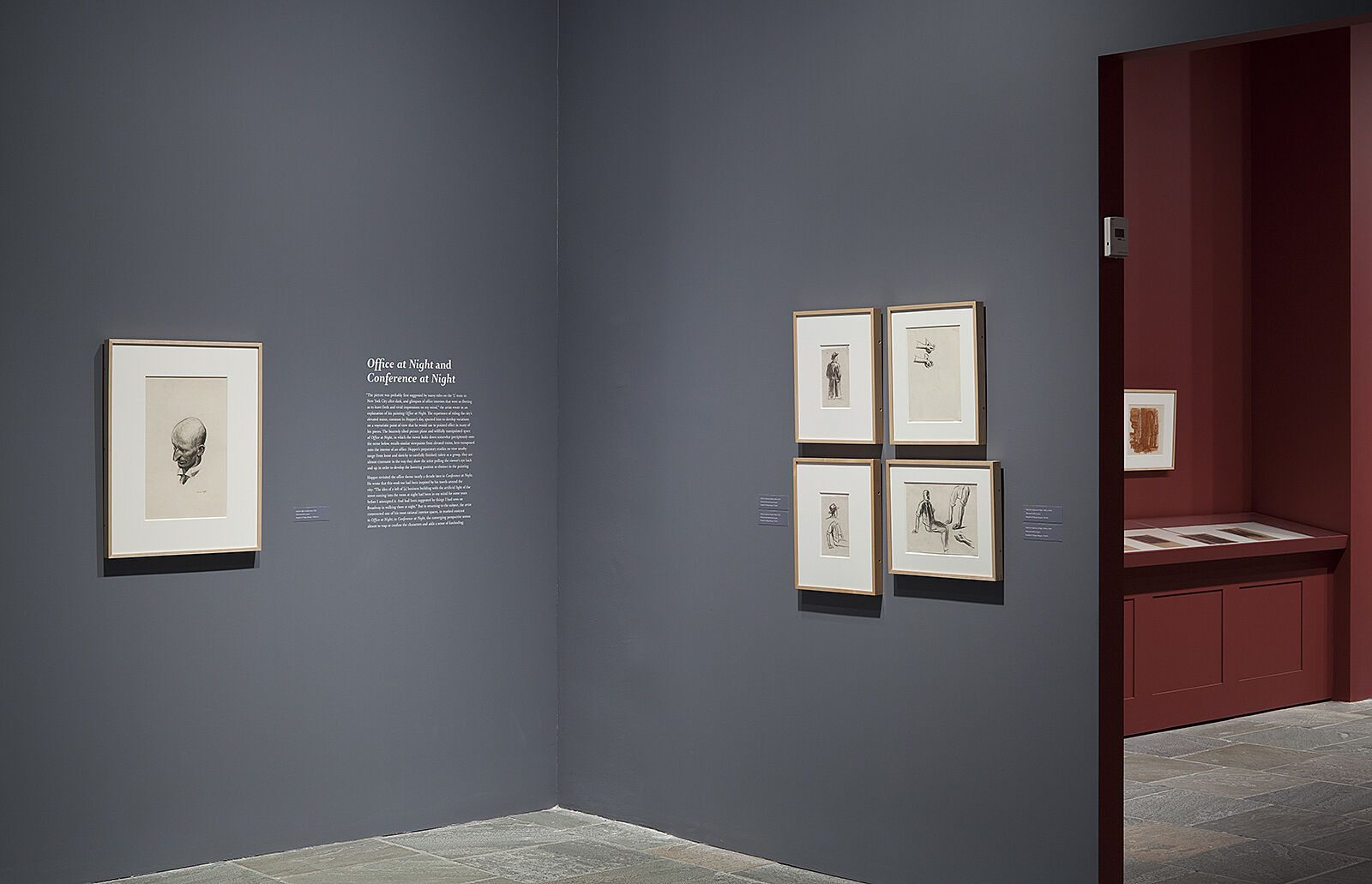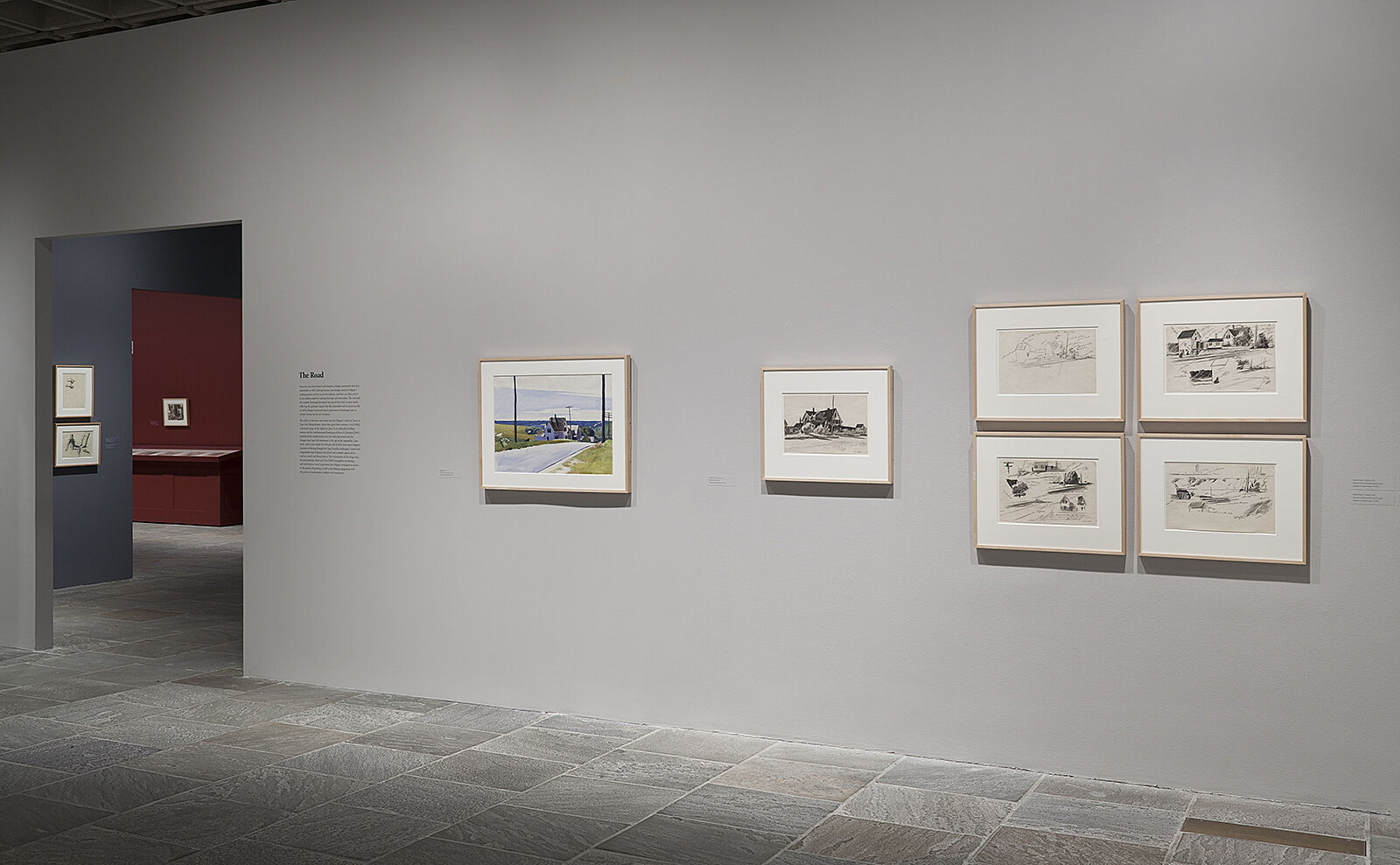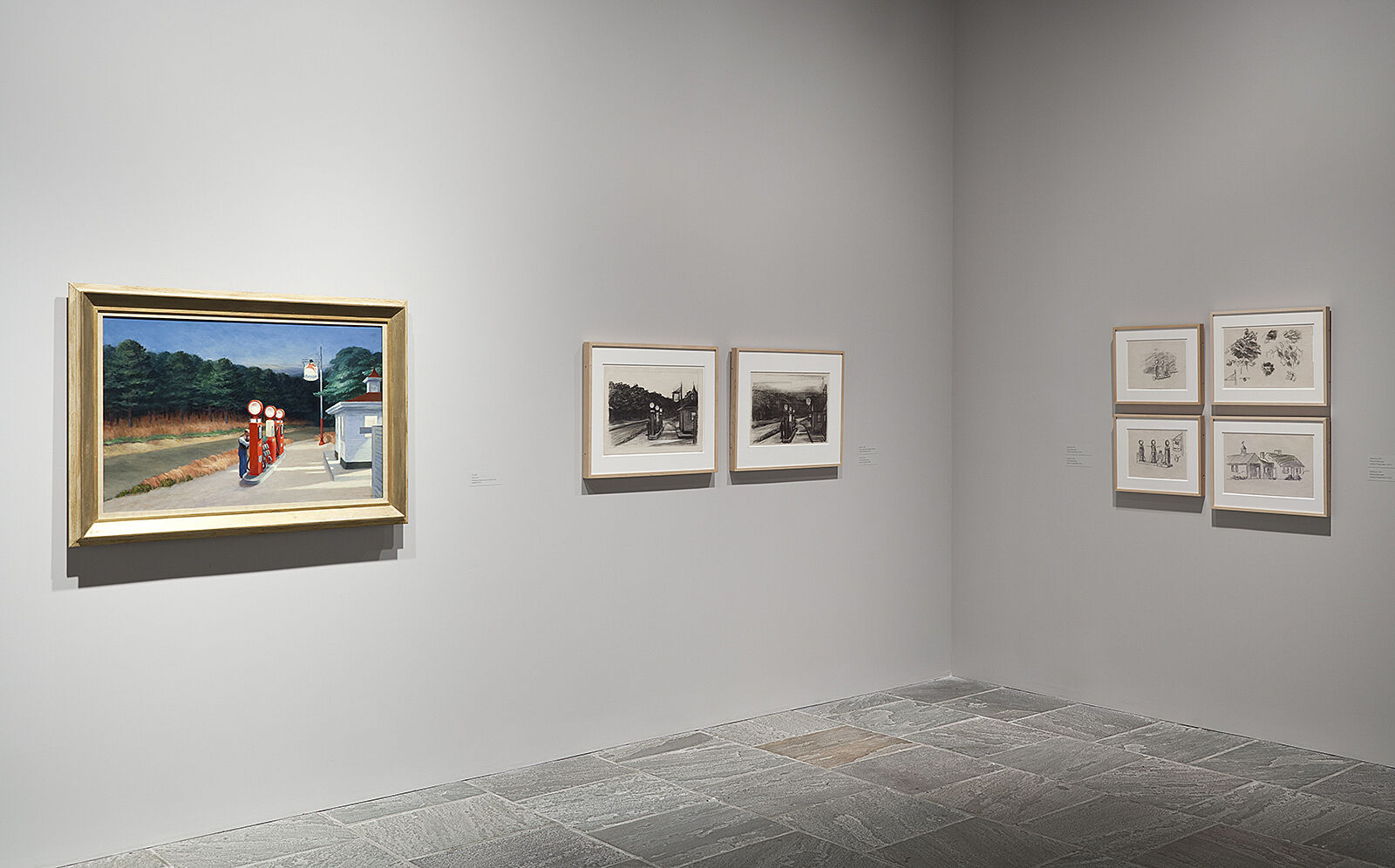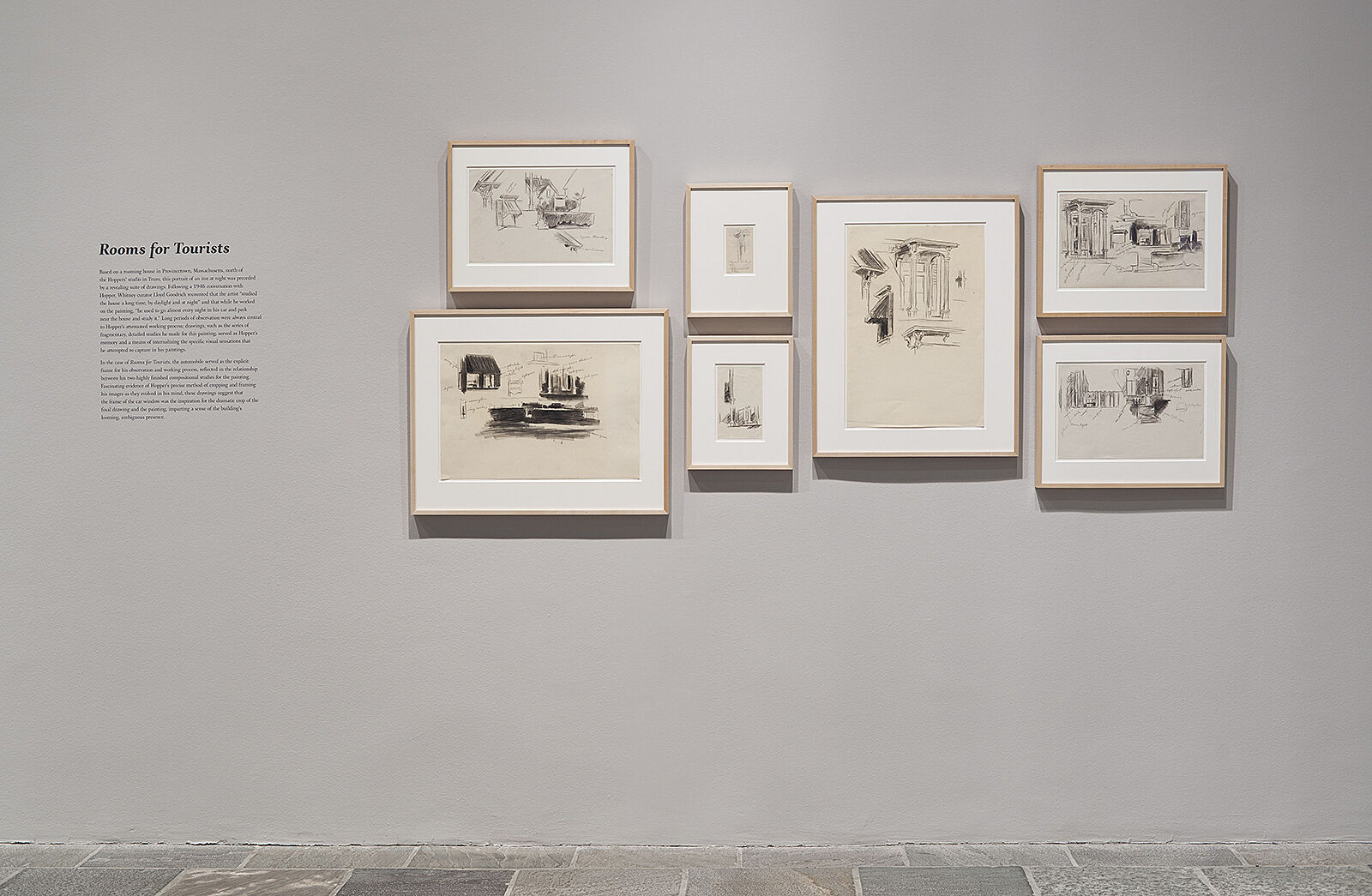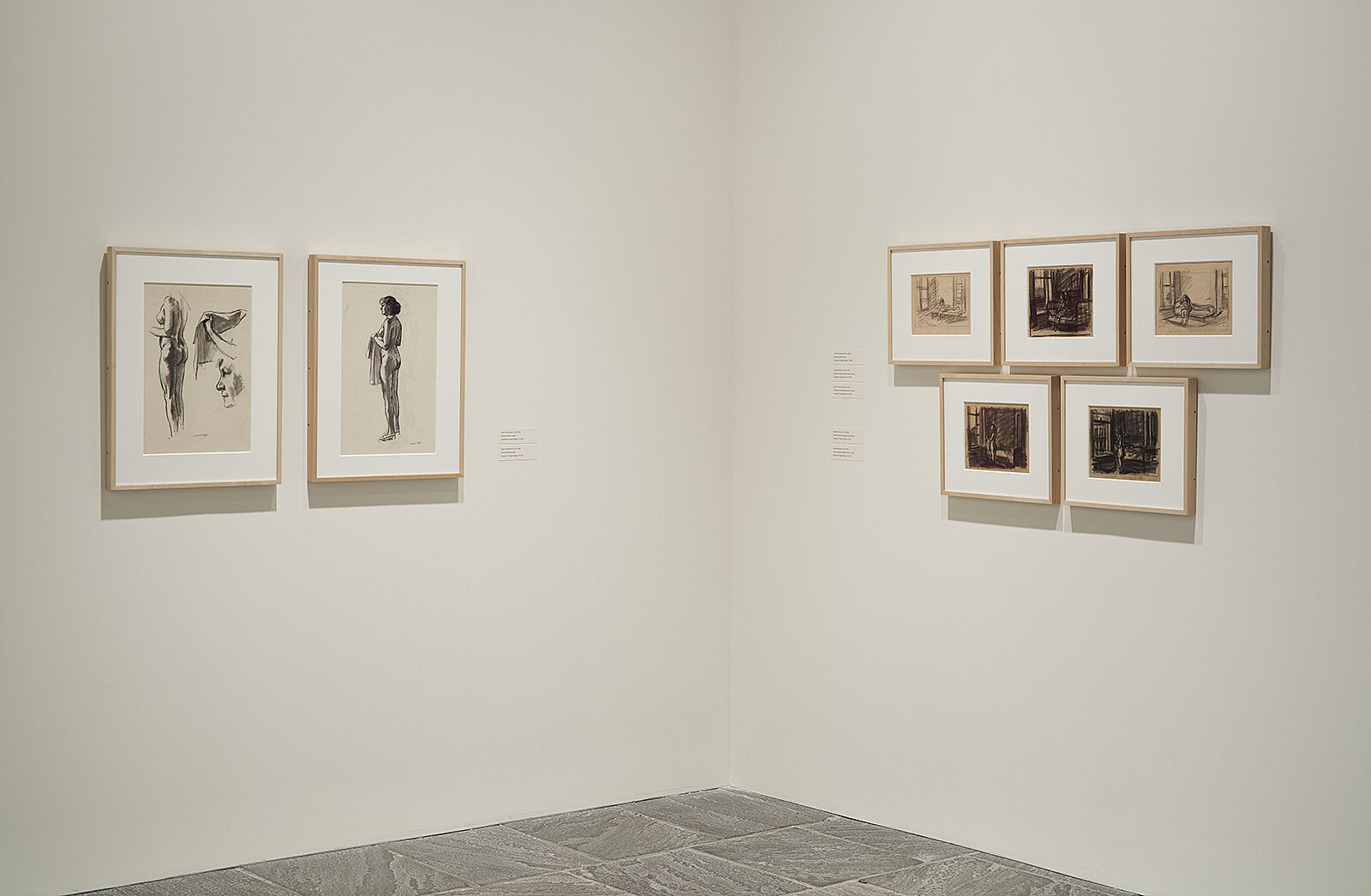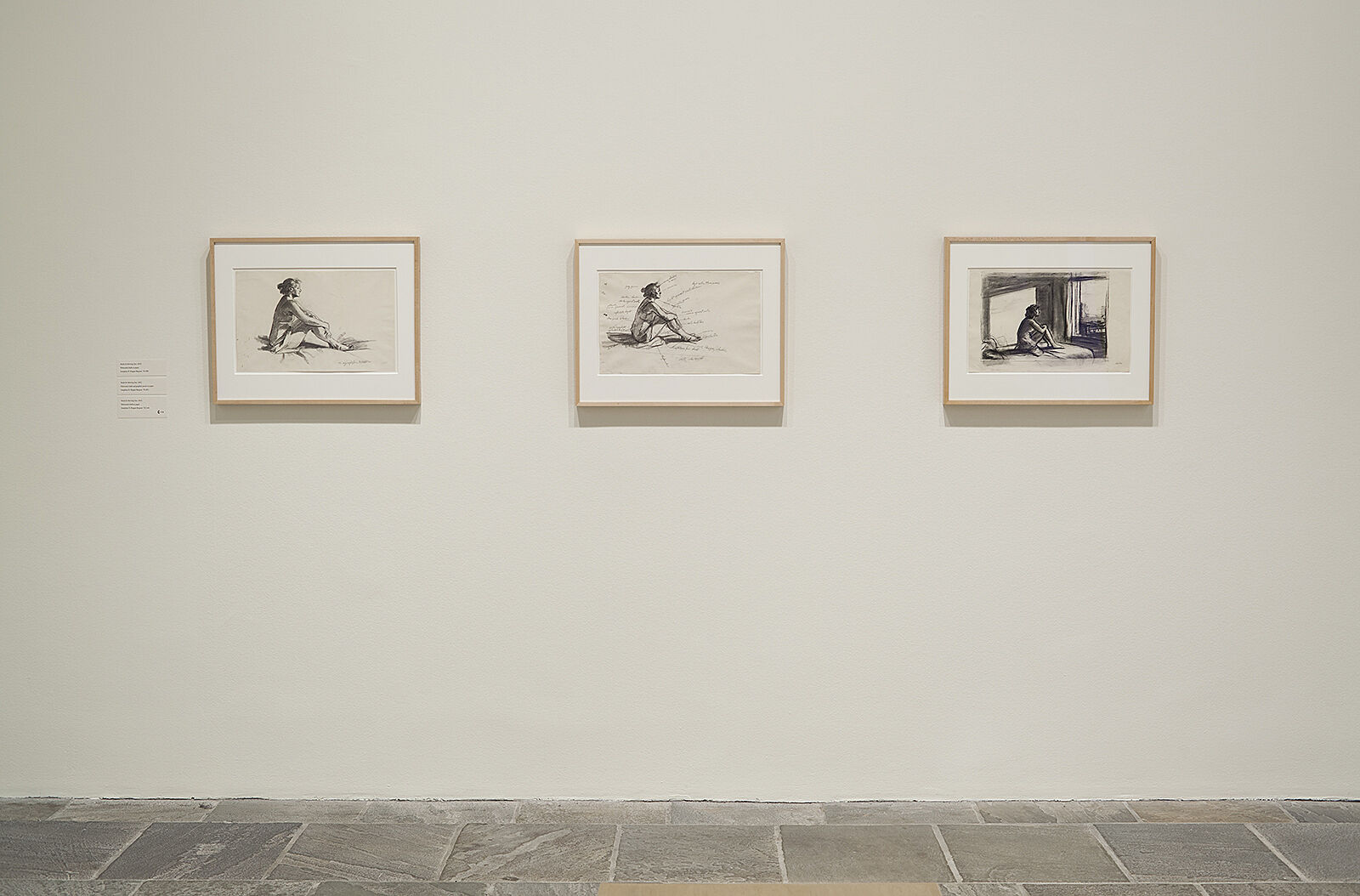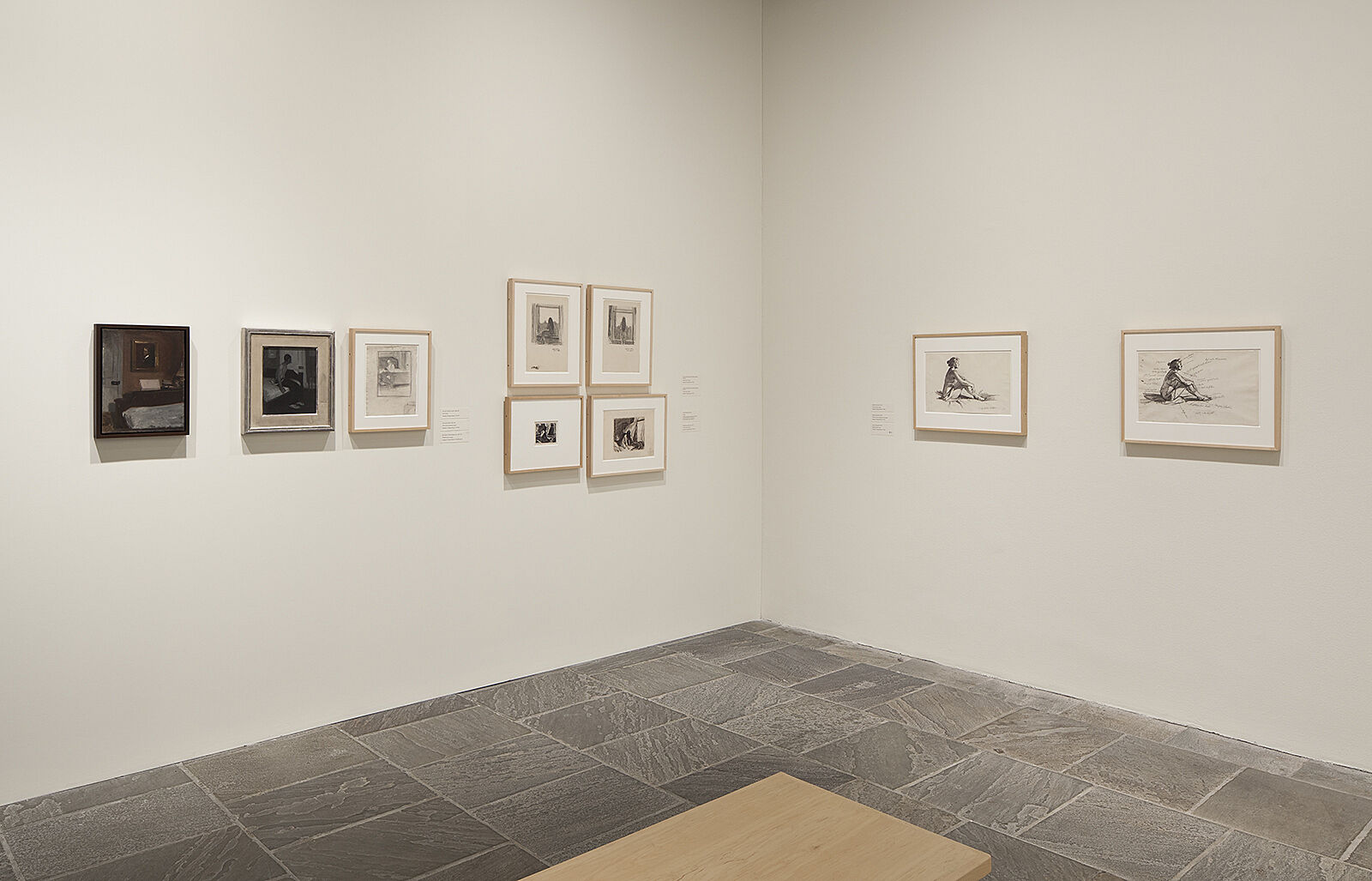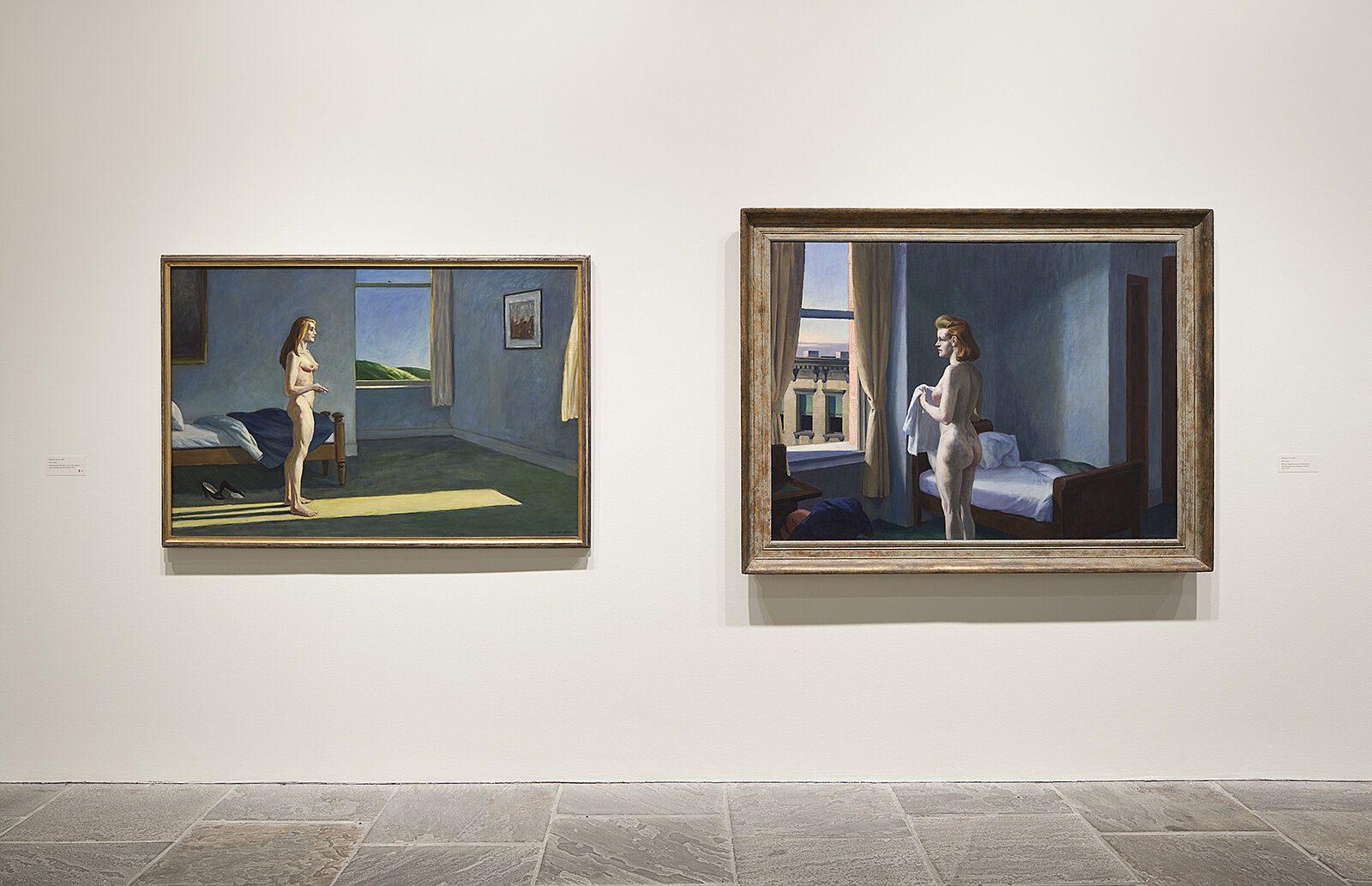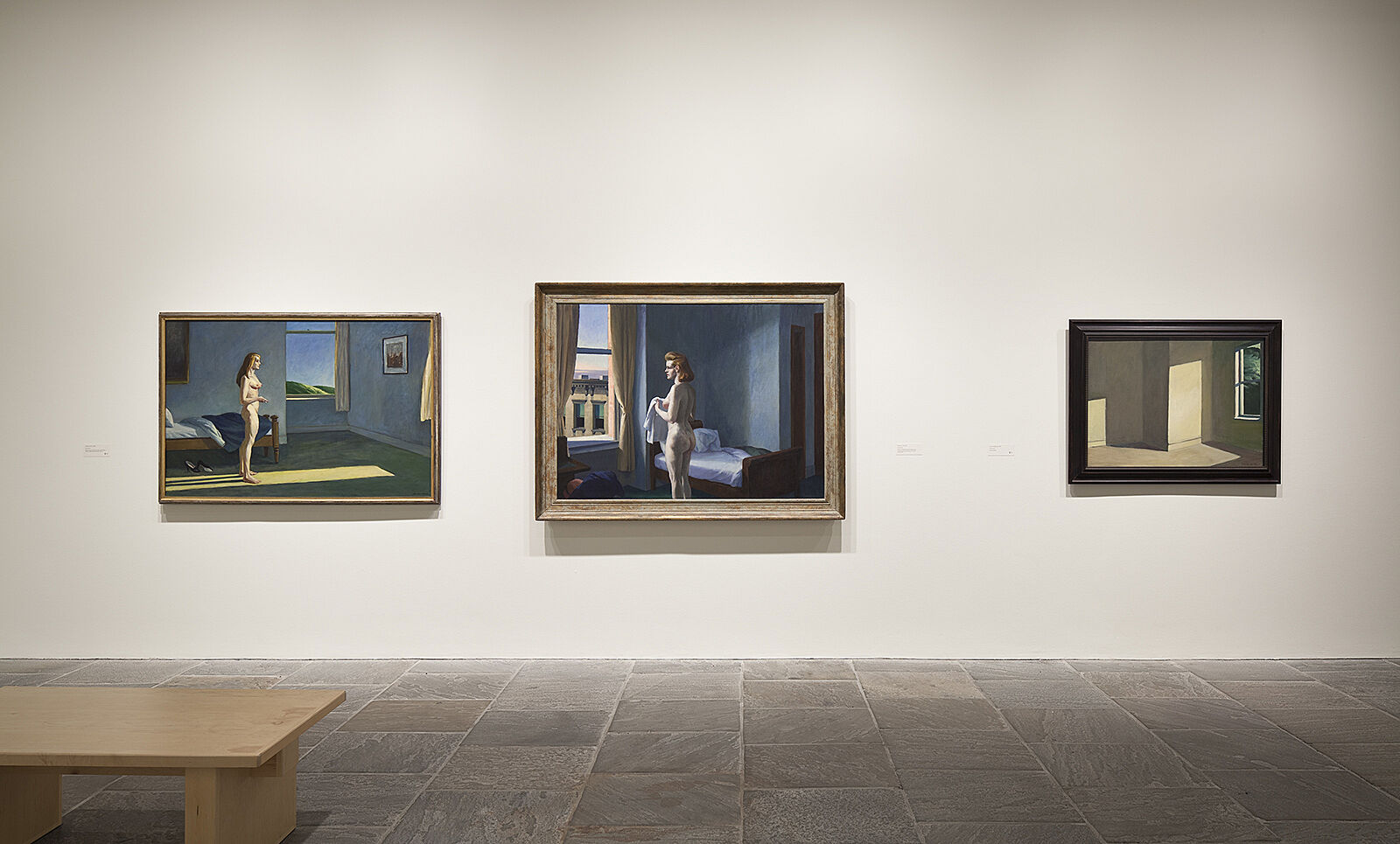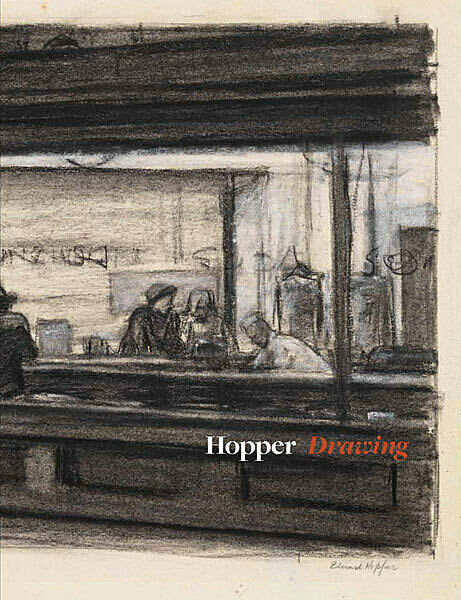Hopper Drawing
May 23–Oct 6, 2013
Hopper Drawing
Hopper Drawing is the first major museum exhibition to focus on the drawings and creative process of Edward Hopper (1882–1967). More than anything else, Hopper's drawings reveal the continually evolving relationship between observation and invention in the artist's work, and his abiding interest in the spaces and motifs--the street, the movie theatre, the office, the bedroom, the road—that he would return to throughout his career as an artist. This exhibition showcases the Whitney's unparalleled collection of Hopper's work, which includes over 2,500 drawings bequeathed to the museum by his widow Josephine Hopper, many of which have never before been exhibited or researched. The exhibition surveys Hopper's significant and underappreciated achievements as a draftsman, and pairs many of his greatest oil paintings, including Early Sunday Morning (1930), New York Movie (1939), Office at Night (1940), and Nighthawks (1942), with their preparatory drawings and related works. This exhibition also features groundbreaking archival research into the buildings, spaces and urban environments that inspired his work.
Hopper Drawing is organized by Carter E. Foster, Steven and Ann Ames Curator of Drawing.
Significant support for this exhibition is provided by The Horace W. Goldsmith Foundation, the National Endowment for the Arts, The Dietrich Foundation, The Selz Foundation, Barney A. Ebsworth, Steve Martin and Anne Stringfield, The Robert Lehman Foundation, Jane Carroll, Aaron I. Fleischman and Lin Lougheed, Arlene and Robert Kogod, and an anonymous donor.
This exhibition is supported by an indemnity from the Federal Council on the Arts and Humanities.
Off-site: a Hopper-Inspired Pop-up
At the Flatiron Building
In celebration of Hopper Drawing, a life-size window installation of Edward Hopper’s Nighthawks (1942) is on view inside the landmark Flatiron prow, one of the original architectural inspirations for this iconic painting.
Publication
Hopper Drawing
Buy publicationIn the News
"The back and forth between the works on paper and on canvas makes the show doubly illuminating, and thrilling."
—The New York Times
"Notably informative, intelligent and visually rich"
—The Wall Street Journal
Video: Curator Carter Foster speaks about Hopper's creative process.
—NYC-ARTS
“Hopper Drawing . . . is a revelation about the artist’s incredible draughtsmanship. Even though most of [his drawings] are studies for paintings—even the background coffee urns in 1942’s iconic Nighthawks get their own trial run on paper—they are worthy of a long look in their own right.
—Vogue
Audio: Curator Carter Foster discusses Edward Hopper's drawings with Leonard Lopate.
—The Leonard Lopate Show
"It is hard to view Hopper’s work with a fresh set of eyes, but Hopper Drawing . . . allows one to do precisely that."
—The New Criterion
"How Edward Hopper Storyboarded Nighthawks"
—ARTnews
"Where’s That Coffee Shop? The multiple locations of Edward Hopper’s Nighthawks, revealed."
—New York Magazine
"[Carter] Foster’s investigation has not been so much about locating the vanished architecture of Hopper’s city but, rather, about revealing the painter’s method."
—The New Yorker
"Ever an important venue for Hopper fans due to their vast holdings, the Whitney offers up another rich spread for devotees to relish."
—The L Magazine
"Hopper Drawing, a new exhibition at the Whitney in New York, not only connects the real to the imagined in the artist's work but also connects paintings to one another."
—Los Angeles Times
"10 Artists Influenced by Edward Hopper's Nighthawks"
—Mental Floss
"Directing attention to the drawings and sketches of Edward Hopper, an artist known for his indispensable impact on oil painting, this [exhibition] catalogue is flush with keen and surprising insight."
—Publisher's Weekly

